Gujarat & Agra, 2007
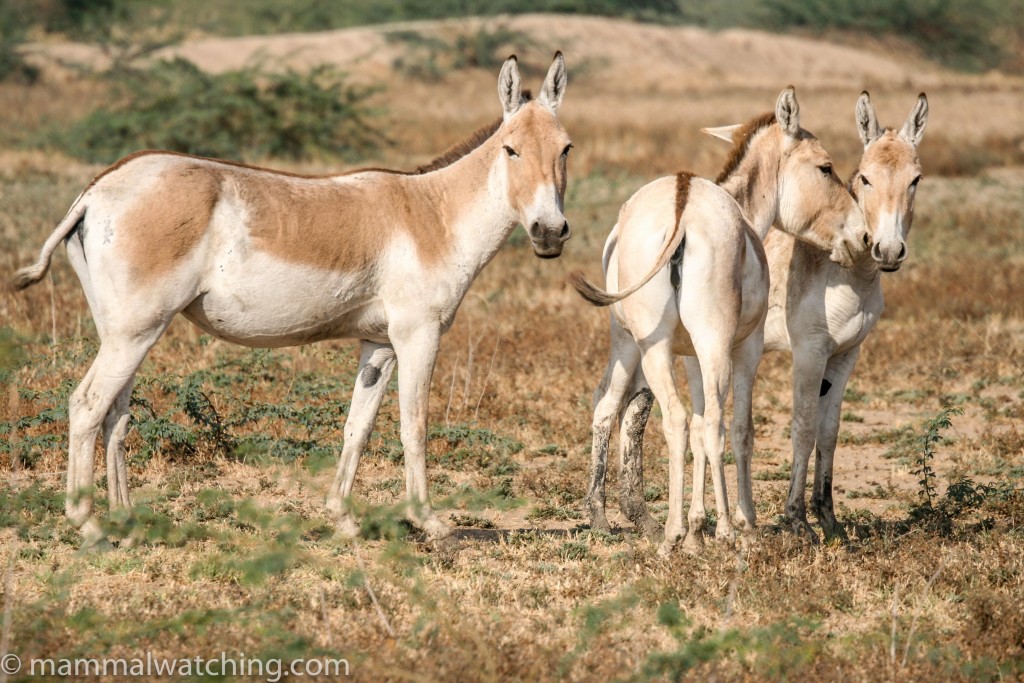
Asiatic Wild Ass, Equus hemionus, Little Rann of Kutch
I had planned to make my second trip to India at the end of 2006. But thanks to the double incompetence of Charles de Gaulle airport (which like the rest of the country grinds to a halt when forced to deal with a crowd larger than what would fit into a Peugeot 206) and Air France, which despite some stiff competition remain the most unfriendly, unhelpful and unpleasant airline I have ever used, I missed my flight. But I rescheduled my trip for February 2007 which turns out to have been a good thing I think: it would really have been quite cold in December.
I wanted to see three species in particular: Gangetic River Dolphins (reputedly easy to see near Agra); Asiatic Wild Ass (for which you have to go to Gujurat) and a Striped Hyena (patchily distributed across most of the country).
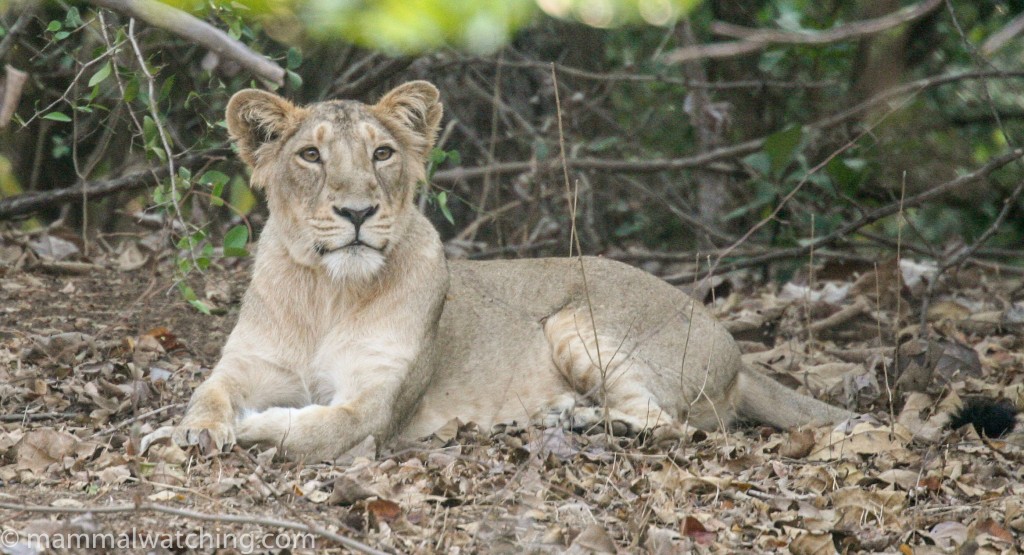
Asiatic Lion, Panthera leo persica, Gir National Park
I emailed a handful of ground agents before I went and only two seemed to know much about the wildlife. Arpit Deomurrai and North West Safaris. I used North West in the end, though at the time of booking there seemed little to choose between them and Arpit.
North West did a good job. The office is very knowledgeable about mammals (and not just the big ones) right across India, although some of their information was a bit out of date it turned out. They were generally very fast to get back to me with prices and the itinerary they helped me plan was a good one. Most impressive was their willingness to book and pay for my internal flights without asking for a deposit from me.
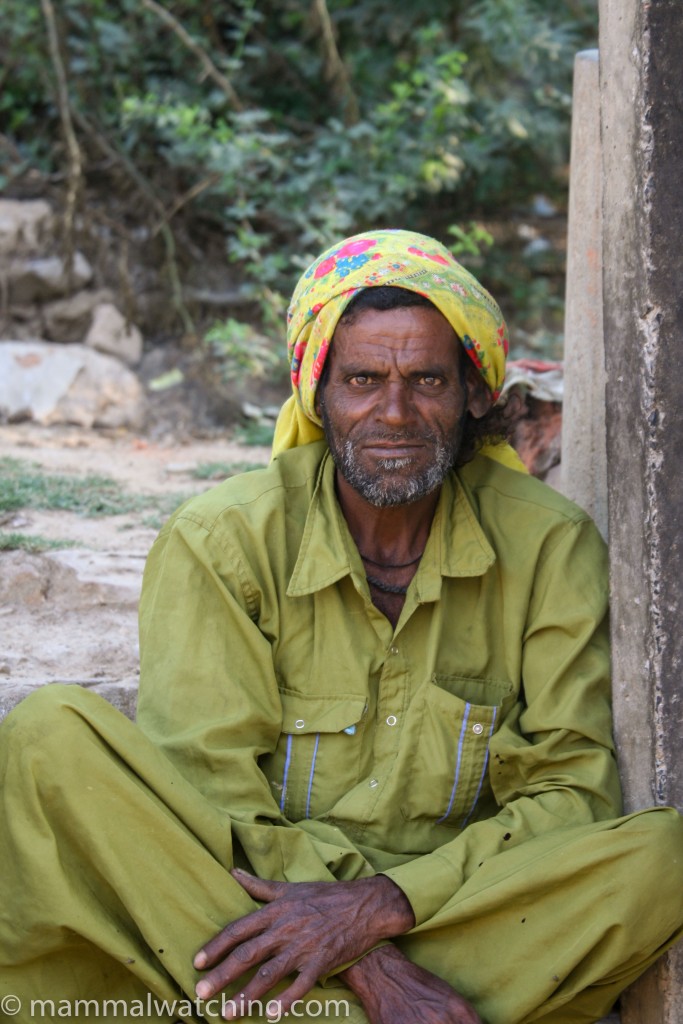
Gujarati villager
I spent just over a week in India.
Chambal
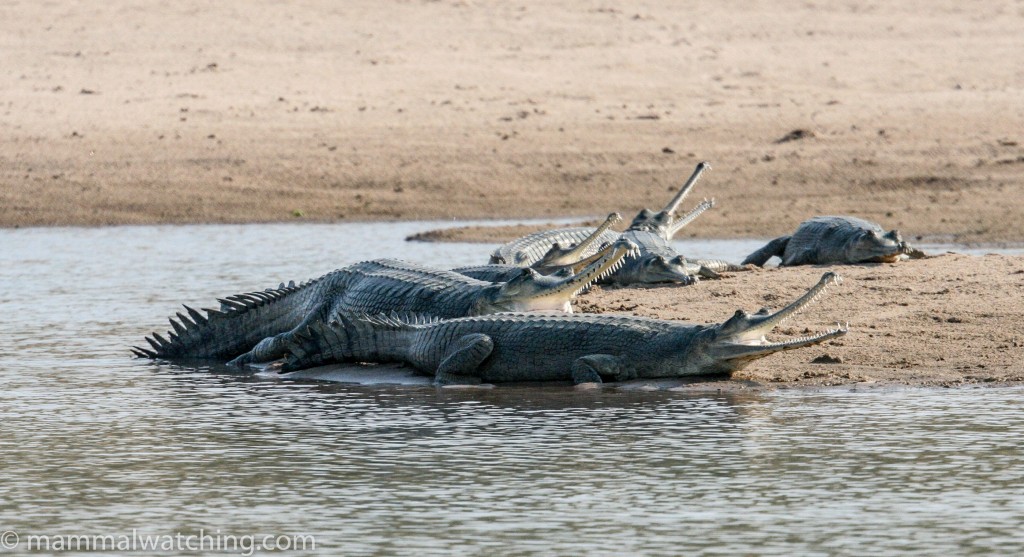
Gharials, Chambal
I flew into Delhi at 1 a.m. on Sunday morning and met my driver and car (self drive car hire is pretty unusual in India and you would have to be intrepid or suicidal to try to drive yourself when the extra cost of a driver is negligible). We drove overnight to Agra, which should take about four hours but took us six because my drive stopped for “5 minutes”, and we woke up 2 hours later.
We rested in Agra and then we drove another two hours onto the Chambal Safari Camp. The camp is excellent: a nice setting, good food and great staff who were keen to help find me some animals.
Chambal National Park is a long thin strip of scrubby forest bordering the Chambal River. The camp offer boat trips along the river in the mornings and afternoons. And the stretch of the river they visit is home to a population of Gangetic River Dolphins that are very findable most mornings.
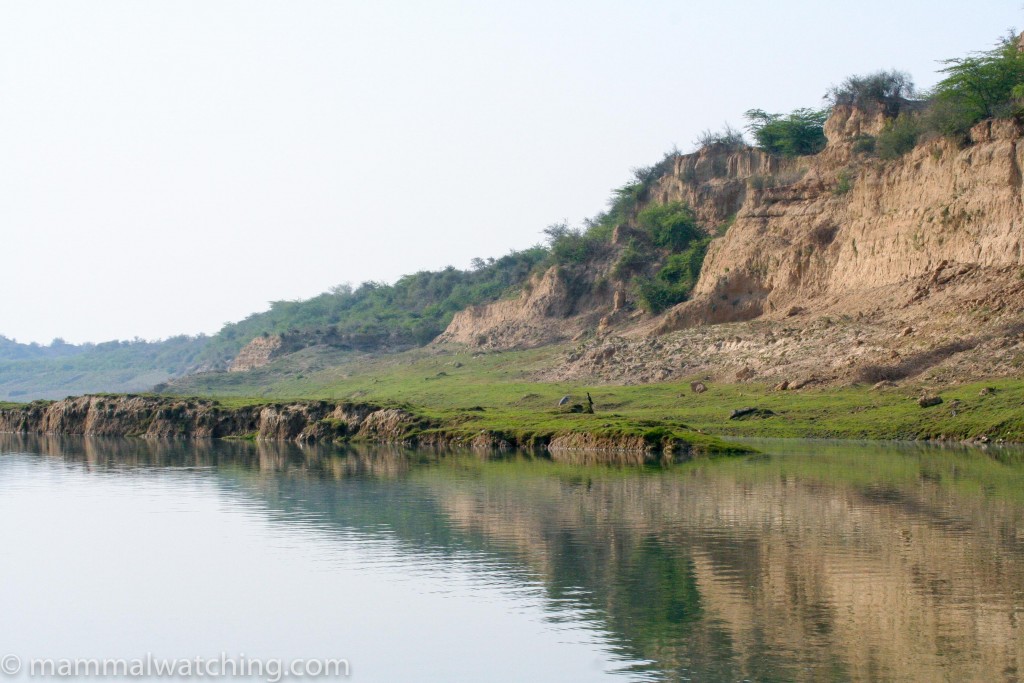
Chambal River
The boat trips leave from a bridge across the river a half hour drive from camp. The afternoon safari was picturesque with some nice birds, plenty of Gharials and Mugger Crocs, and a few turtles. But no dolphins. Perhaps they are not active in the afternoon or perhaps they spend their time elsewhere.
The next morning though we were on the river as soon as the mist cleared at about 9 a.m. and travelled the 3 km downstream to the dolphin spot. Within five minutes we saw the first animal break the surface. There were three or four animals feeding here for about an hour, though it was difficult to approach them. I had only fleeting glimpses as they broke the surface for a second every two to three minutes. The dolphins hang out near a small sand bar that was also home to a group of Indian Skimmers.
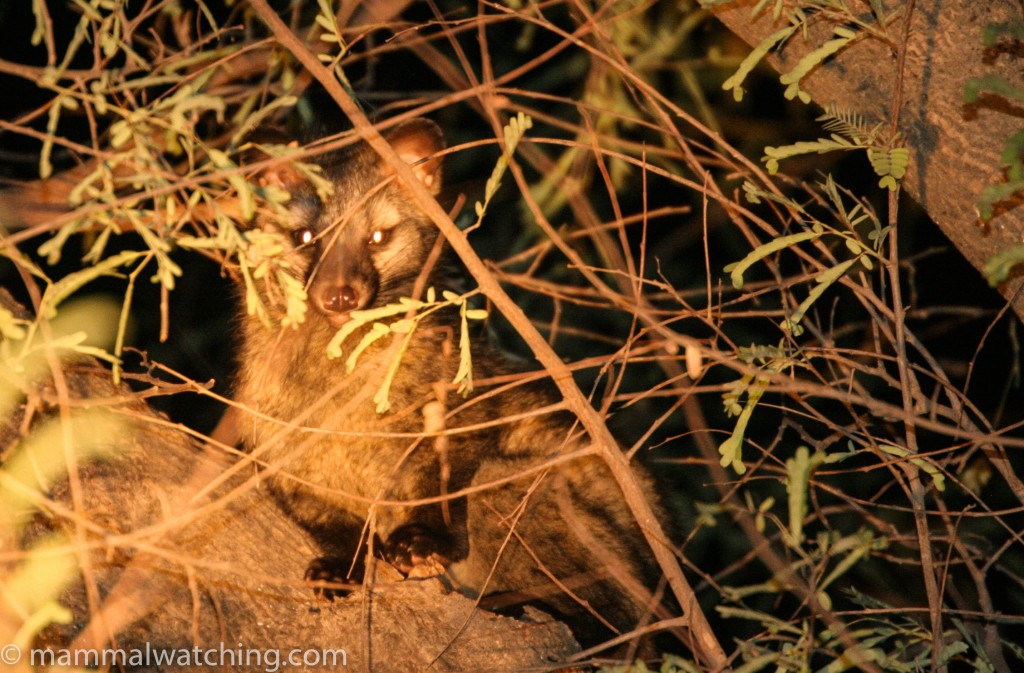
Common Palm Civet, Paradoxurus hermaphroditus
Some spotlighting around Chambal in the evening found a Common Palm Civet in the garden and Indian Foxes (a mother and two cubs) denning in the paddock (more like waste ground) outside the camp. They occasionally see Striped Hyenas here late in the evening.
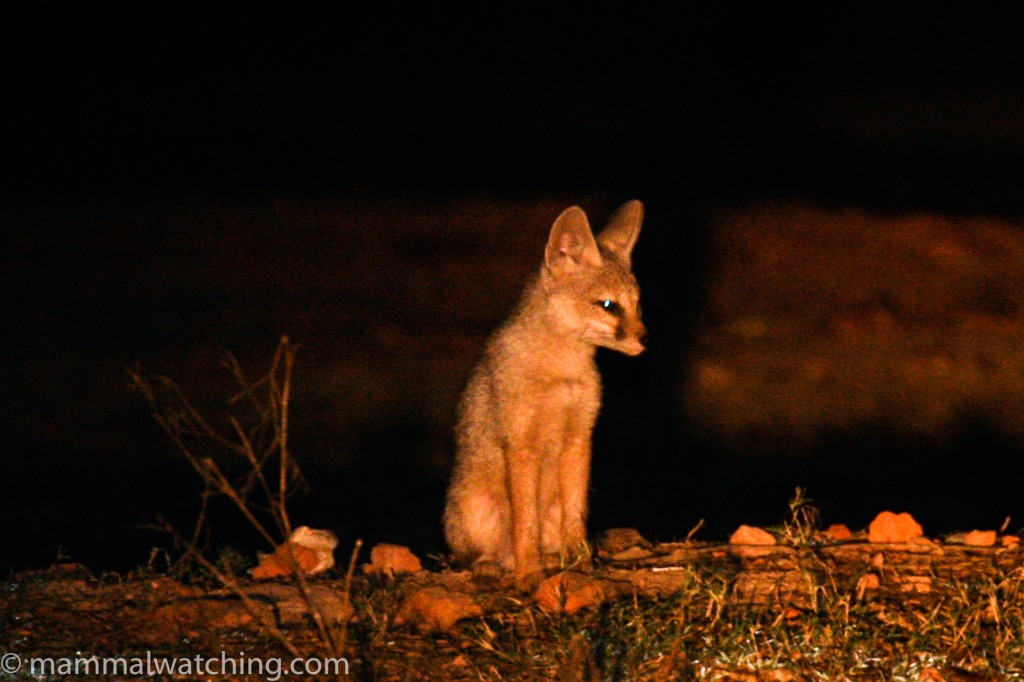
Indian Fox, Vulpes bengalensis
Indian Flying Foxes were feeding in the garden at night, and Five-striped Palm Squirrels were common in the daytime. I set 15 Elliott traps without success.
Bharatpur: Keoladeo Ghana National Park
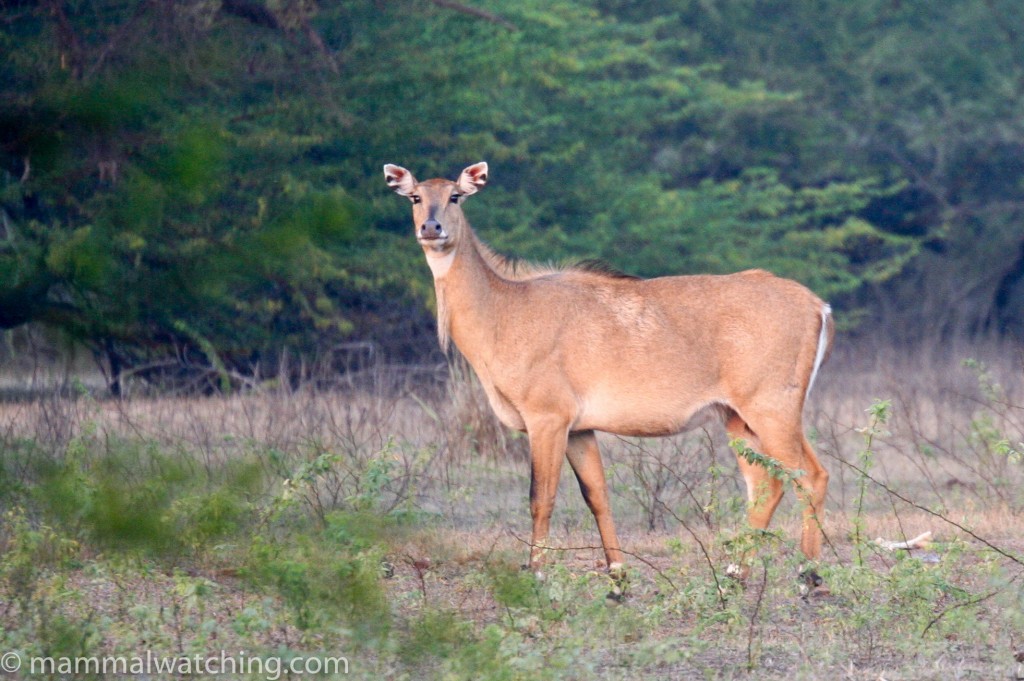
Nilgai, Boselaphus tragocamelus
After lunch I headed back to Agra, and there were groups of Rhesus Macaques running around town. It was another 45 minutes or so on to Bharatpur Sanctuary (also known as the Keoladeo Ghana National Park). This small and busy park is well known among birders. At the entrance to the park you are encouraged to hire either a bicycle or a bicycle-rickshaw and perhaps a guide too. I had come here to look for Fishing Cats: Bharatpur is reputed to be one of the best places to observe this species – and also Indian Porcupines.
I didn’t see either species. The park – which ought to be a wetland – was pretty much dry. Failed monsoons last year and an argument over water rights had seen to that.
I couldn’t work out the current status of Fishing Cats in the park. My guide (Hemant Chansoria tel 94113919203) spoke pretty good English and seemed OK on the mammals. He insisted that he saw Fishing Cats every few weeks without making a special effort to find them. He told me he had seen one a week ago near the only bit of water in the park at that time. However, I had arranged my trip to Bharatpur to cross paths with an Australian mate, Steve Anyon-Smith on his own Indian trip: his guide, who Steve spoke highly of, said that he hadn’t seen a Fishing Cat in four years.
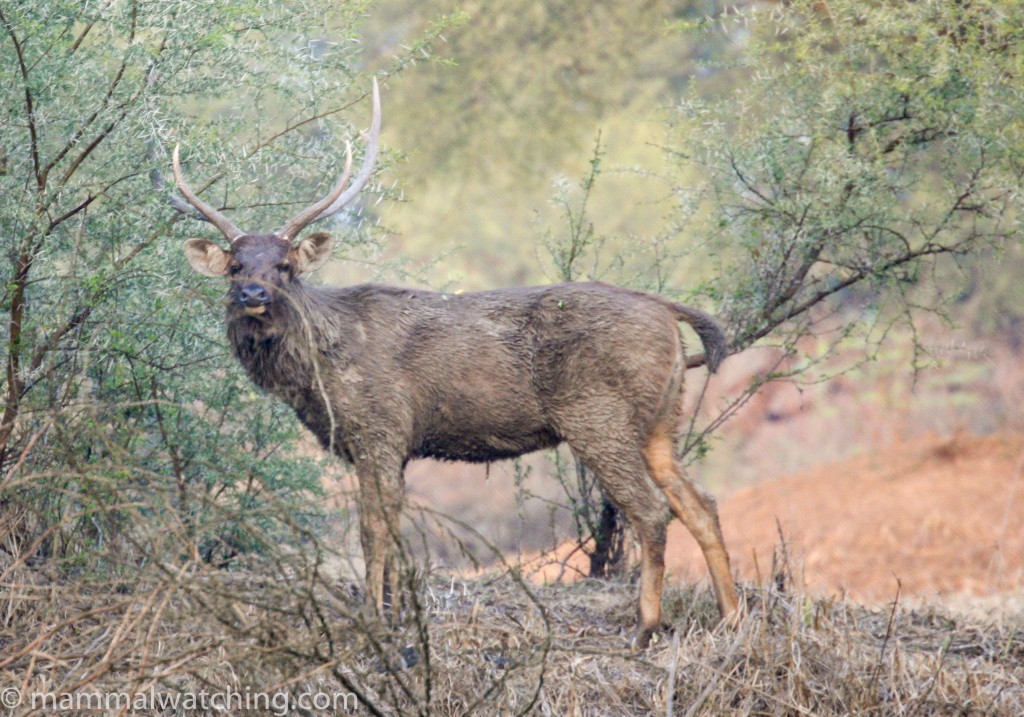
Sambar, Rusa unicolor
Porcupines, however, are present and apparently common. My guide took me to several den holes just off the kilometre long road that runs between the park entrance gates and the barrier to the core zone.
We saw quills and fresh tracks. But of course porcupines are nocturnal and there is no spotlighting allowed in the park. North West Safaris had recommended looking for porcupines by spotlighting just outside the park barrier. But the rules have changed: the guards don’t allow people to go through the entrance gate after dark unless they are staying at the park hotel, which is within the park and just outside the barrier to the core zone. Had I known I would have stayed at the hotel where I am pretty confident I could have walked around with a spotlight without much hassle and would have seen a porcupine: I was told one animal visited the small temple near the hotel looking for food each evening.
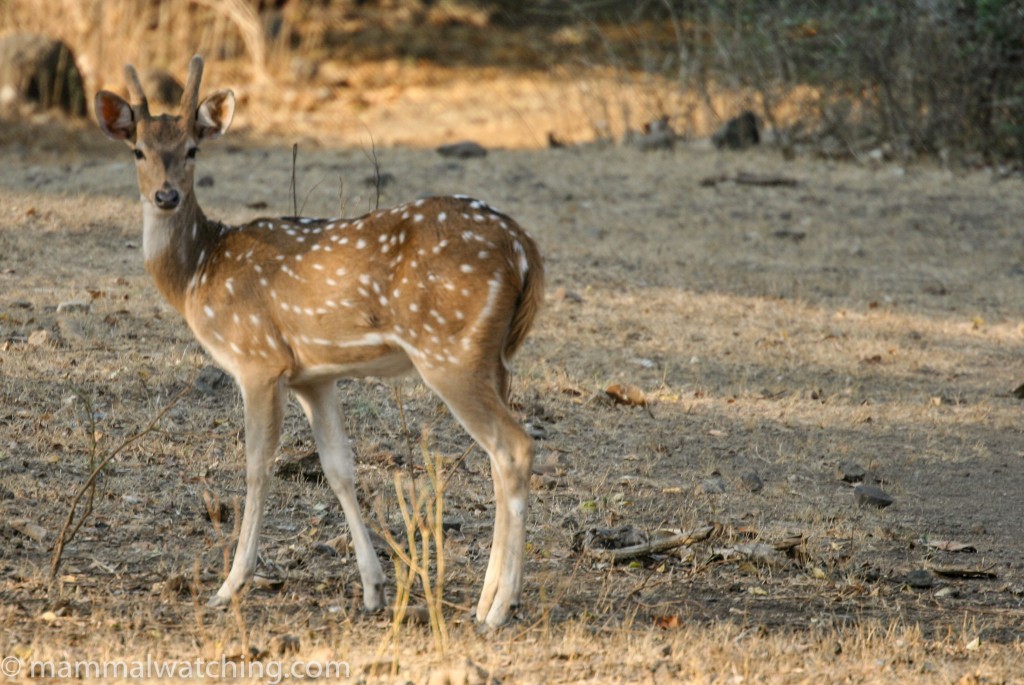
Chital, Axis axis
But in a couple of hours before dusk I did see Chital, Nilgai, Sambar, Jackal and Indian Hare (all common) together with my first Indian Grey Mongoose (Herpestes edwardsii) crossing the road. Both the Indian Grey and Small Oriental Mongooses are apparently present and common.
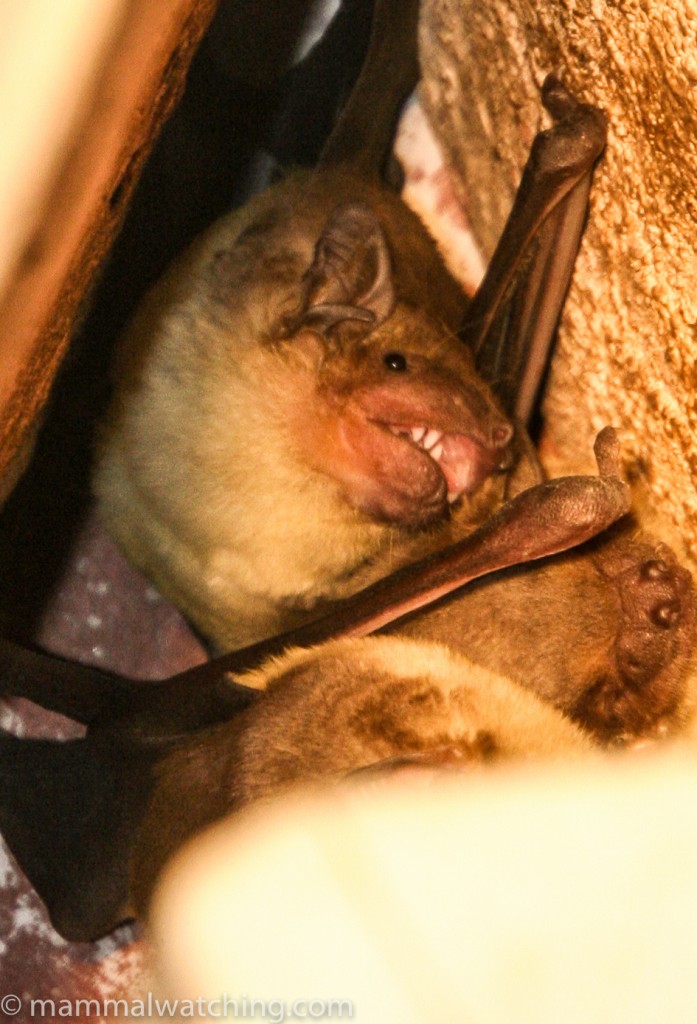
Asiatic Greater Yellow House Bat, Scotophilus heathii
I spent the night in the fading glory of the Laxmi Villas Palace hotel. Steve Anyon-Smith had found a couple of bats roosting in a ceiling nook above a speaker. After climbing on top of a table and waving my tripod at them I saw their bright yellow bellies: Great Asian Yellow House Bats (Scotophilus heathii).
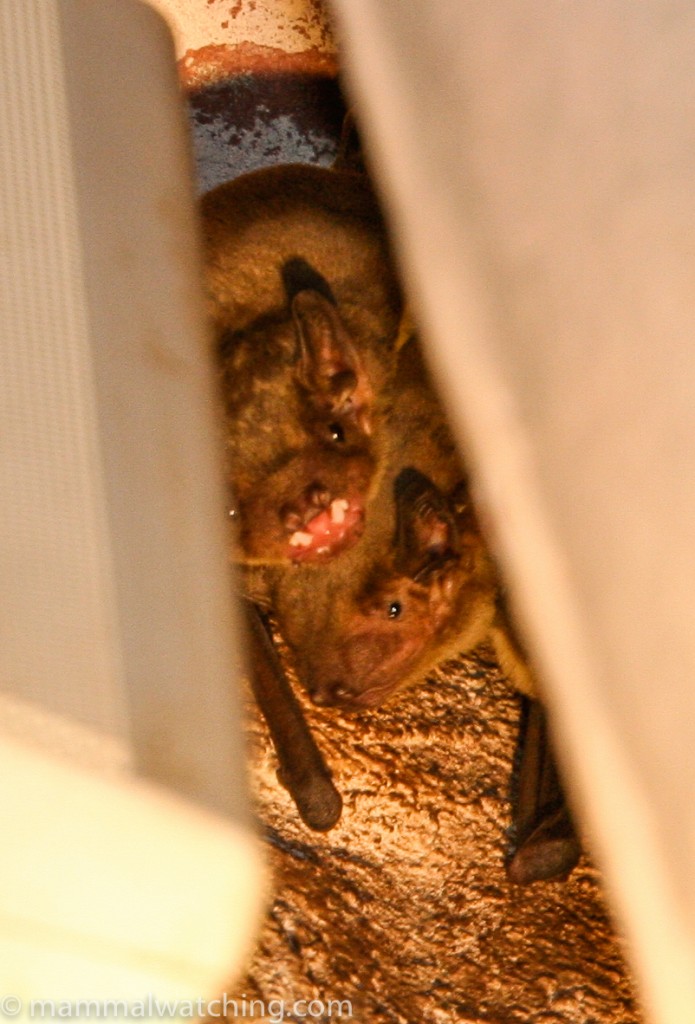
Asiatic Greater Yellow House Bat, Scotophilus heathii
Little Rann of Kutch
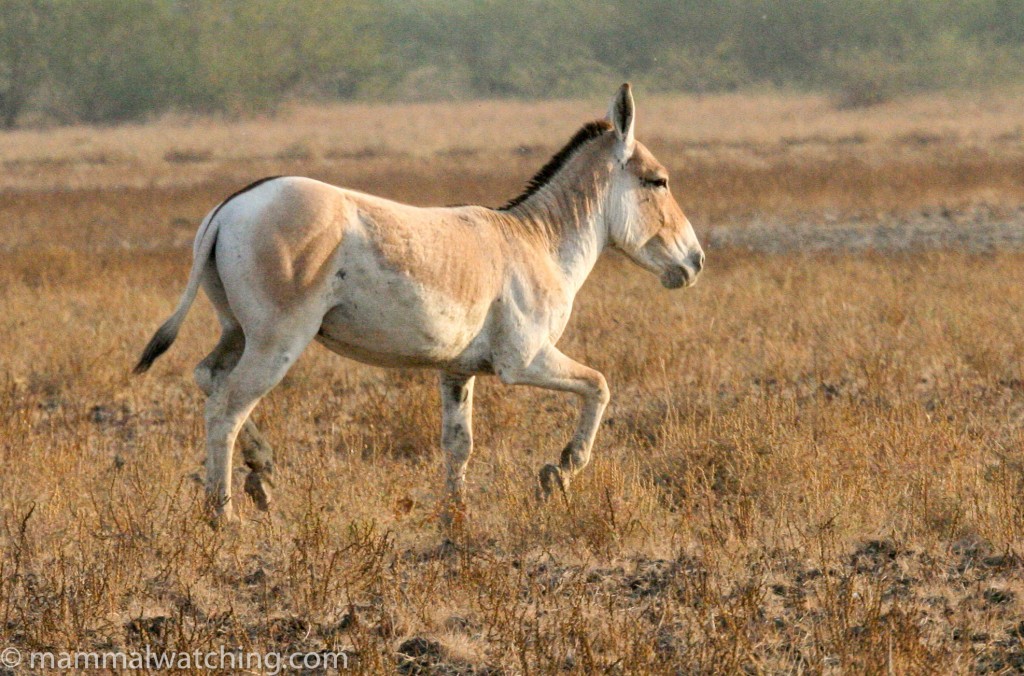
Asiatic Wild Ass, Equus hemionus
After a short safari at first light in Bharatpur I drove five hours or so back to Delhi and flew on to Ahmedabad in Gujurat on Kingfisher Airlines (who were excellent). I arrived a bit later than expected in Ahmedabad and didn’t get to Dasada, and the Rann Riders camp, which istwo and half hours from Ahmedabad, until 8.30 p.m.
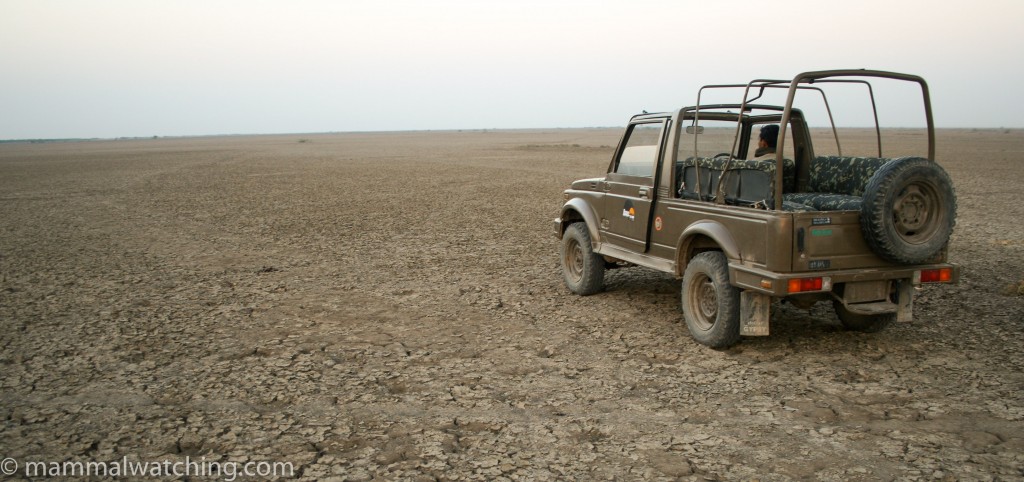
Little Rann of Kutch
A late spotlight drive that evening into the Wild Ass Sanctuary was not particularly exciting. There were a lot of small mammals crossing the road, none of which the car slowed down for quickly enough to get a look at. I guess many were Indian Gerbils. In the sanctuary itself we saw a few Indian Hares and some Nilgai.
-
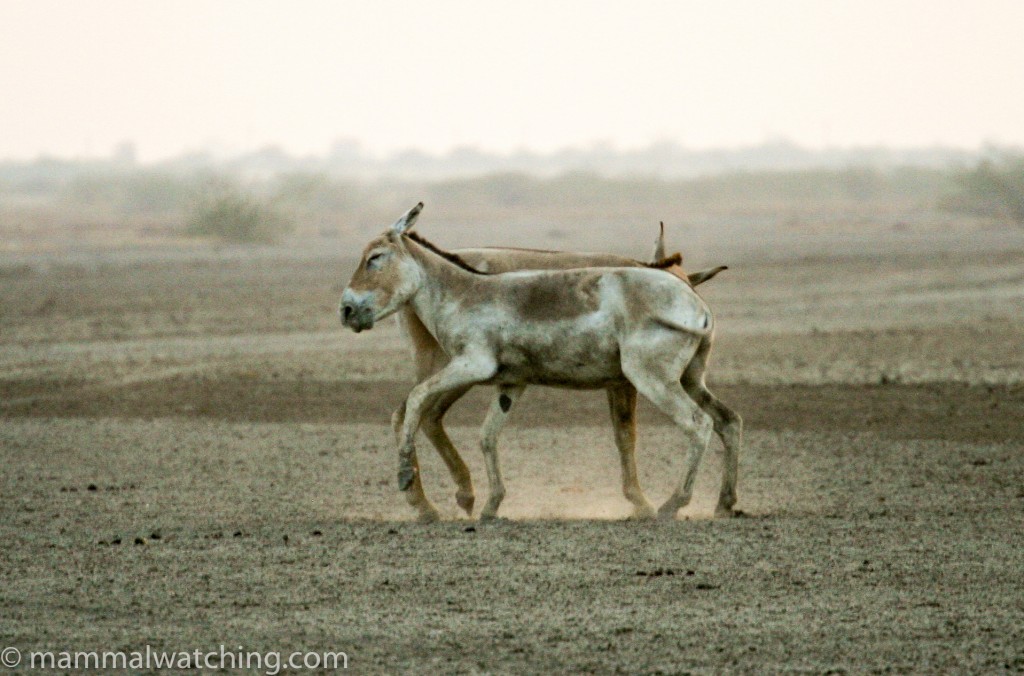
Asiatic Wild Ass, Equus hemionus
The next morning we left camp at 6 a.m. to get to the Wild Ass Sanctuary at dawn. Wild Asses were abundant. They were quite difficult to approach by vehicle and, unusually, it was easier to get close on foot. We also saw Nilgai and Wild Boar.
After breakfast we went to the local village to visit a couple of houses with bat colonies. I didn’t get to visit the ‘best’ colony, in the empty second storey of a house because the owner was out of town. There was a lot of guano in the basement of another house but no sign of any animals.
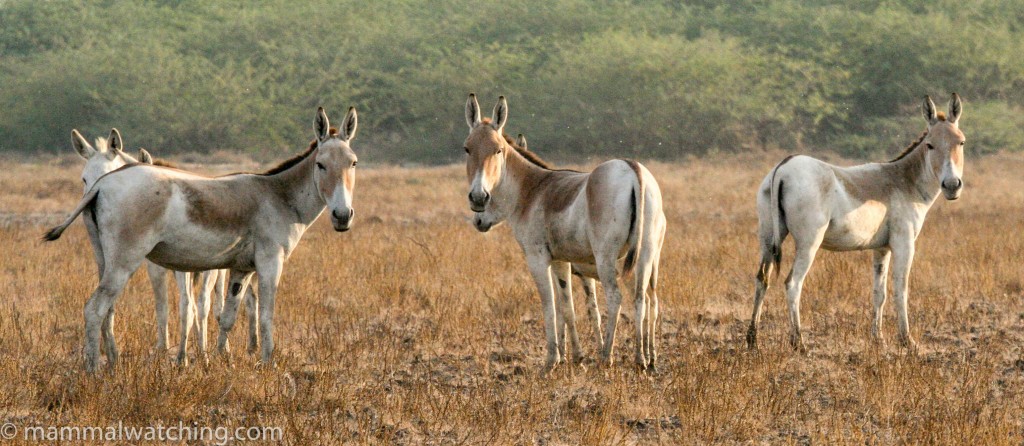
Asiatic Wild Ass, Equus hemionus
Rann Riders camp was the most attractive and comfortable place I stayed. But it was also quite disappointing. My guide was not particularly interested in finding mammals nor all that knowledgeable about how to find them. The place is better set up for birdwatchers I think and deviation from the norm is not encouraged.
Although the key mammalian reason to visit is to see the asses, I saw them later from the road that leads to Bhuj so if you were in a rush you could probably see Wild Asses without staying in Dasada. The Little Rann is apparently also a good spot to see Wolves though they are easiest to see in the monsoon season (June through August) where they congregate in certain areas.
North West Safaris had told me I could spotlight around the “cattle graveyards” where Striped Hyenas had been reported recently. The Rann Riders guide said they hadn’t been seen there for many years, but perhaps they just didn’t want to go looking. As I was leaving I was told that a pair of Striped Hyenas were breeding at Murdoch Island (a hill in the dry salt pan) somewhere near the camp and that if I stayed longer they were “100% guaranteed”. I decided I would have to return.
Great Rann of Kutch: CEDO Camp
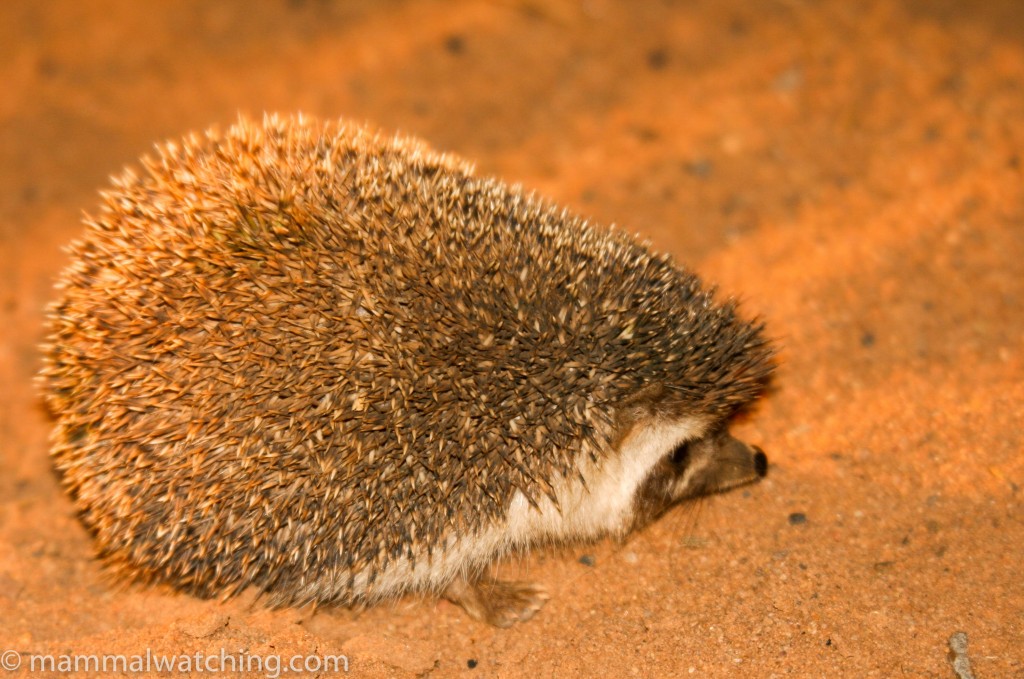
Indian Hedgehog, Paraechinus micropus
Once in a very long while I stay with people who are as keen on finding mammals as I am. And CEDO (Centre for Desert and Ocean) camp is a great example. It is an absolute gem of a place and I cannot rate it highly enough. The whole area is quite fun and is well off the tourist route: when we stopped in a village I became the centre of attention. The scenery was reminiscent of Australia’s Pilbara, which for me is about as good as it gets.
CEDO is about an hour and a half west of Bhuj and about a seven hour drive from Dasada and the Little Rann of Kutch. The centre is small and there would be space for at most eight visitors I suppose. The accommodation is clean, comfortable but quite basic (as well as very cheap).
It is picking up a reputation among birders as a great spot, not least because the owner, Jugal (J.K.) Tiwari is so knowledgeable about the area and its birds. Jugal is a scientist with extensive research experience in the birds of the area. He was happy to admit that he knew rather less about the local mammals but was very keen to learn more. As well as being good company, and an excellent guide, Jugal couldn’t work hard enough to find me the mammals I wanted to see. I think he would have gone looking all night every night had I asked him to. He was awesome.
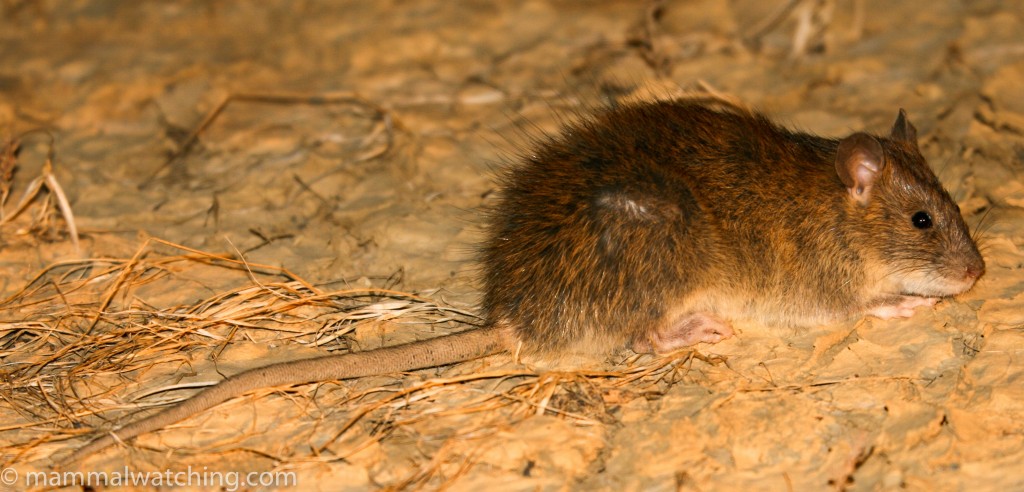
Lesser Bandicoot Rat, Bandicoota bengalensis
There are many animals in the area, and because there is no national park there are no restrictions around spotlighting. Unfortunately a government sponsored charcoal collection scheme is putting a great deal of pressure on the area. Jugal explained that some 40,000 people are camped in the forest making charcoal. They are supposed only to be harvesting an exotic pest shrub (Prosopis juliflora) for the charcoal. But there is little regulation and inevitably many of the native acacias are being cleared. These trees play a vital role in the ecosystem. No one seems to be doing anything about it and an ecological tragedy is unfurling.
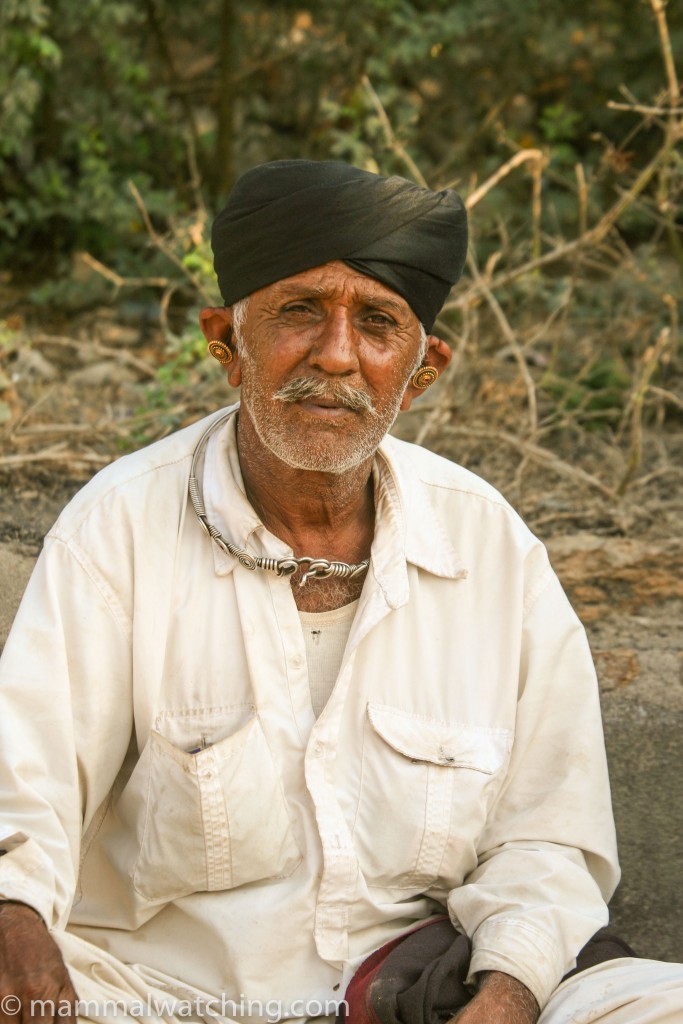
Gujarati villager
On our first evening, Jugal took me to the Banni Grasslands, near Fulay village and not far from camp where a very large population of Lesser Bandicoot Rats are established. They were living in colonies around some of the trees – islands in the barren grasslands –and they apparently retreated to the tops of the trees during high monsoon years. Their regular paths – rodent highways – were impressively obvious in the day time and we saw several hundred rats in a couple of hours driving at night and caught one by hand (I took a fur clipping because Jugal thinks they could be a separate subspecies and is sure they have not been studied).
Given the rodent biomass there were surprisingly few predators in the area. We saw a couple of owls, a Jungle Cat and a Jackal. There were unconfirmed reports of a Caracal in the area. Nilgai were common.
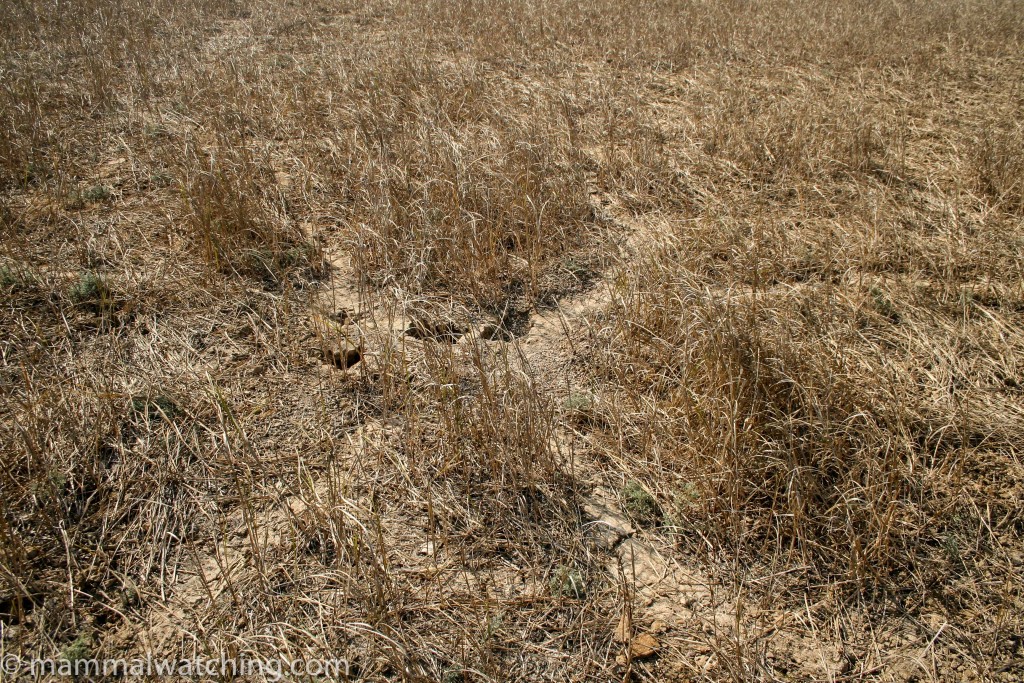
Lesser Bandicoot Rat, Bandicoota bengalensis tracks
On the way back to CEDO we saw an Indian Hedgehog on the road, common in the area as are the Long-eared Hedgehogs. We also got a long look at an Indian Field Mouse that froze on the road in the light’s beam.
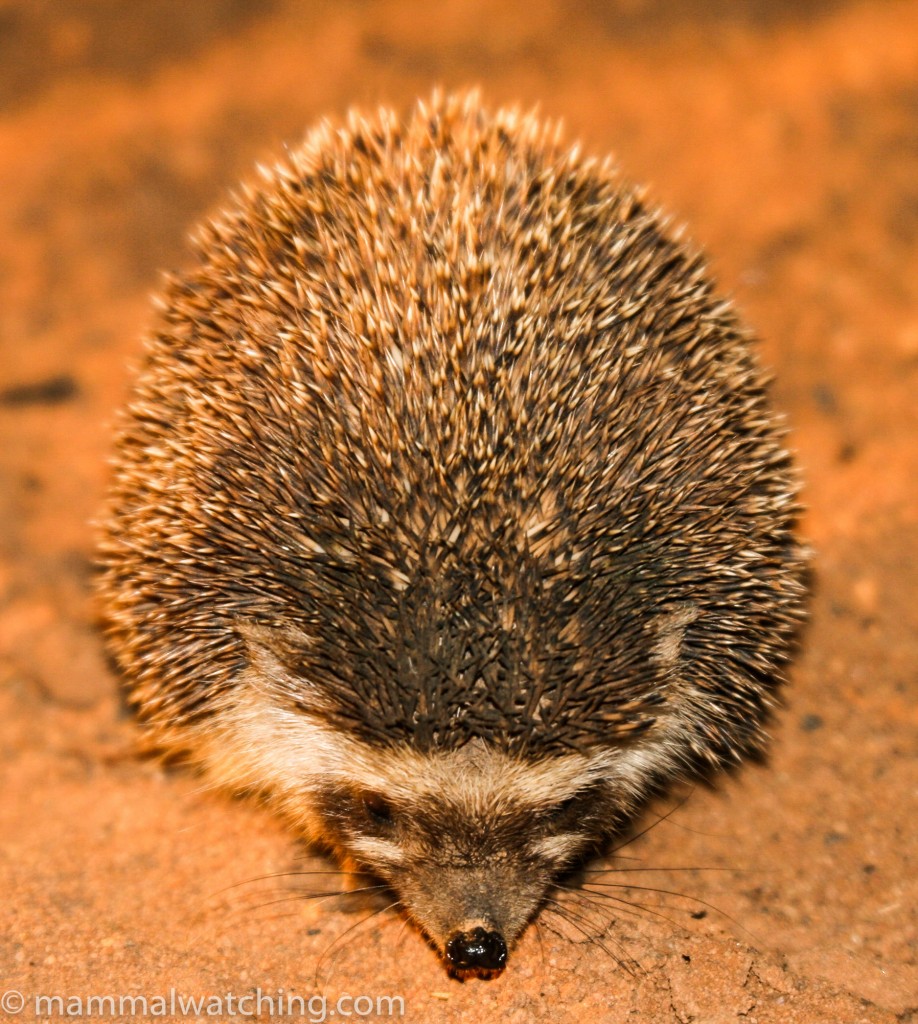
Indian Hedgehog, Paraechinus micropus
The next morning there was an Indian Gerbil in one of the Elliott traps I had set near Jugal’s place and we caught a few House Mice in traps I set inside the camp kitchen.
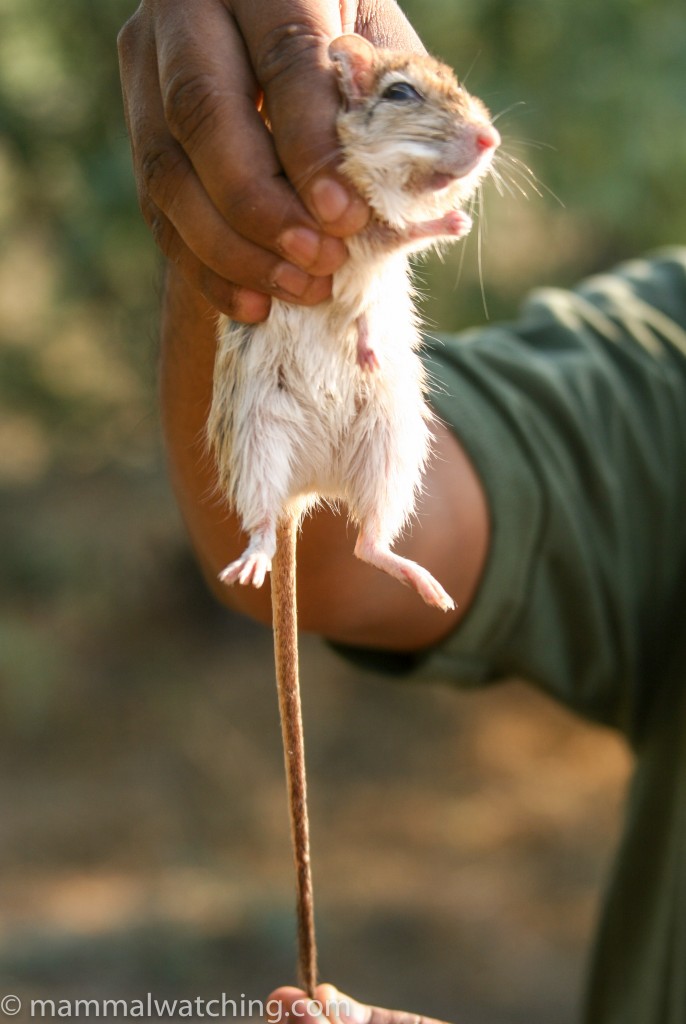
Indian Gerbil , Tatera indica
Jugal took me to a nearby monastery to see a colony of Greater Mouse-tailed Bats.
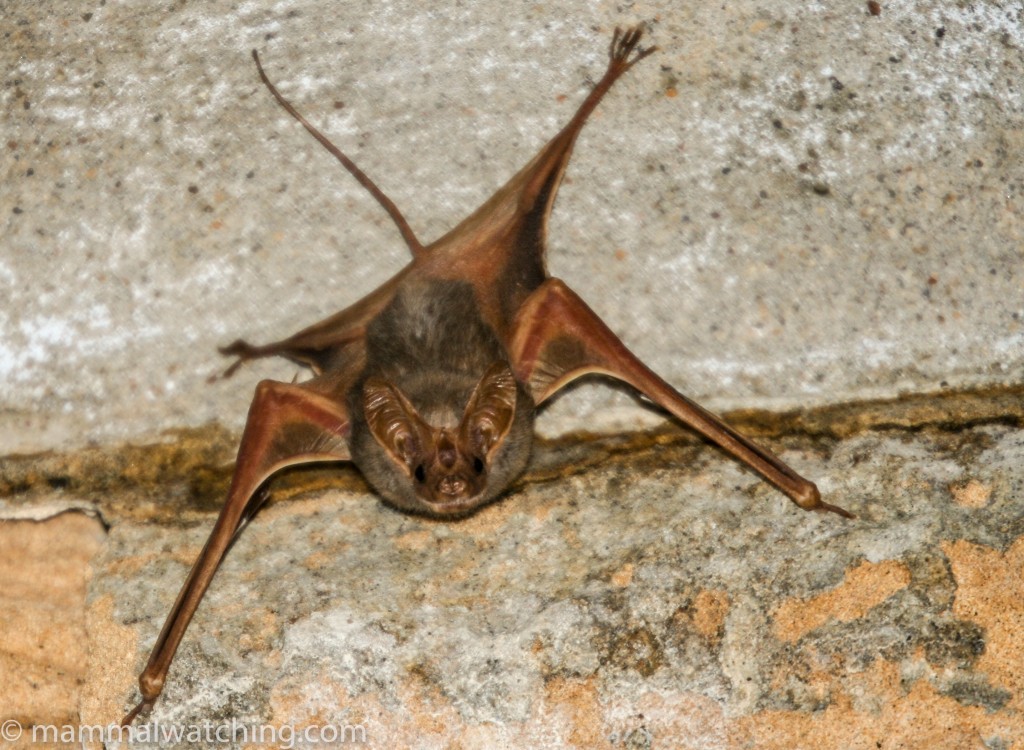
Greater Mouse-tailed Bat, Rhinopoma microphyllum
For our second evening we visited the Paat River, near Dhufi in the Abdasa region of Kutch, stopping to look at an Indian Grey Mongoose with two young on the way. This area is home to a population of Wolves that had been radio tracked quite intensively and starred in a Discovery Channel documentary.
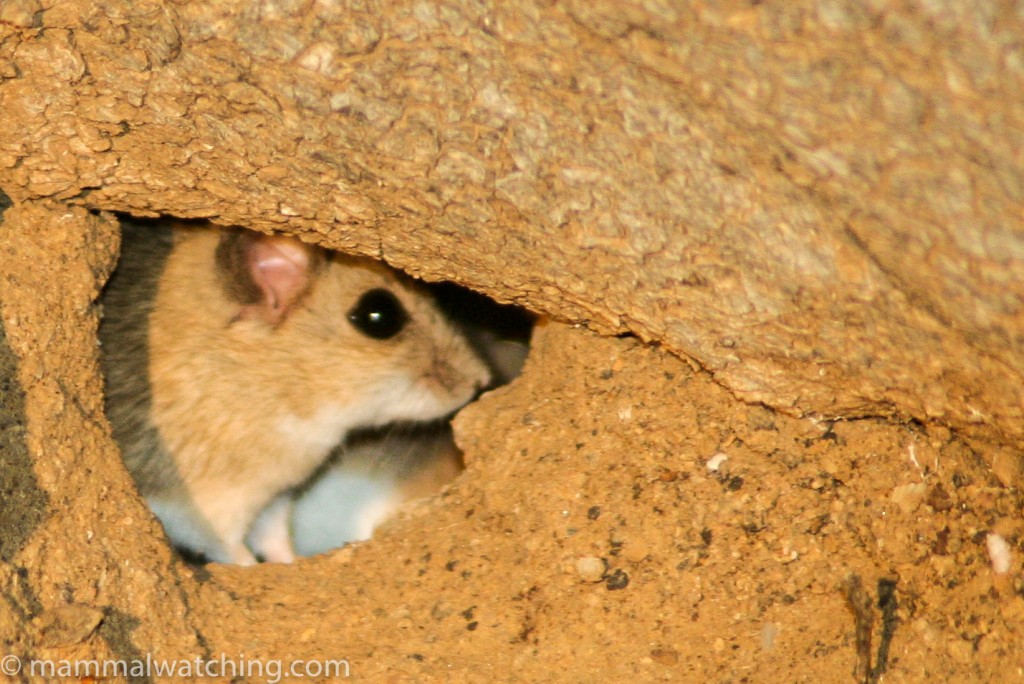
Sand-coloured Rat, Millardia gleadowi
It was a beautiful spot. We didn’t see any Wolves but during several hours that night we saw Chinkara (Indian Gazelles), Nilgai, Indian Fox, Indian Hares, and a Jackal. We also spotted several rodents and got some great views of a family of Sand-coloured Rats living under a tree in a sandy clearing.
Hyenas are present in the area and we saw tracks along a dry river bed.
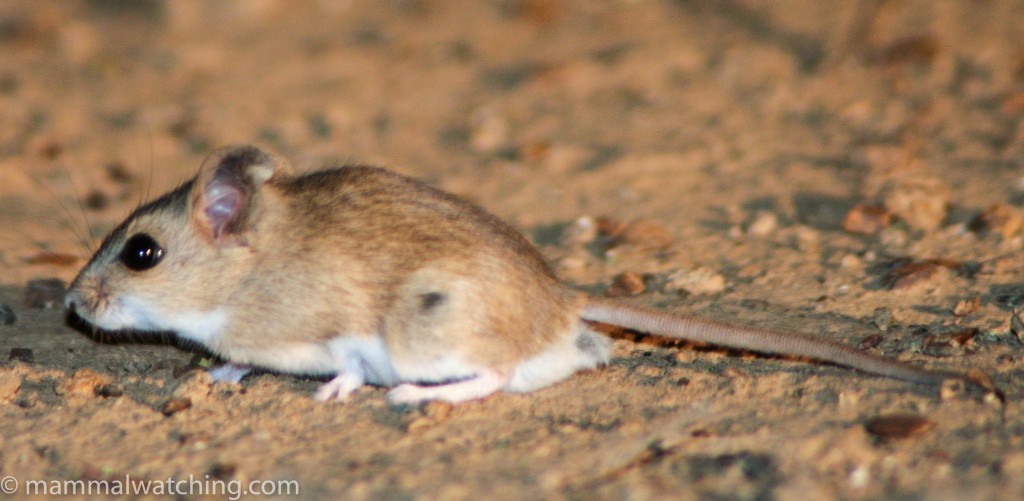
Sand-coloured Rat, Millardia gleadowi
Later that night about a kilometre or so outside the small village of Dhuffi I picked up some eyeshine and we saw a small cat apparently hunting in longish grass alongside an electricity pylon. Jugal and I approach on foot and he got a couple of photos, despite his malfunctioning flash. At first we thought it was a Leopard Cat that was well out of its range. But after advice from Richard Webb and others it seems to have been the distinctive Asiatic (Desert) Wildcat Felis sylvestris ornata.
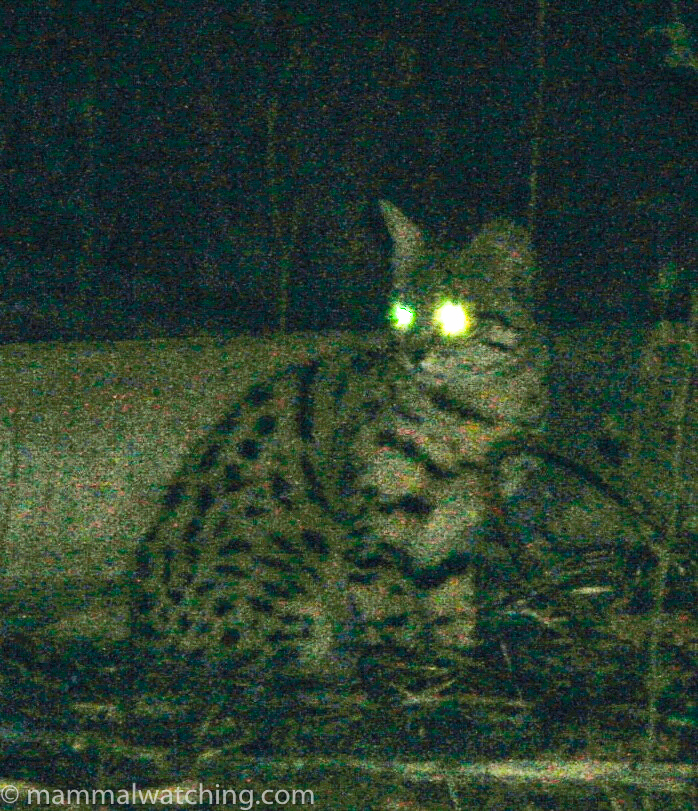
Asiatic (Desert) Wildcat, Felis silvestris ornata. Photo by Jugal Tiwari
Next morning, the six traps I set around the crops behind CEDO camp had three different species.
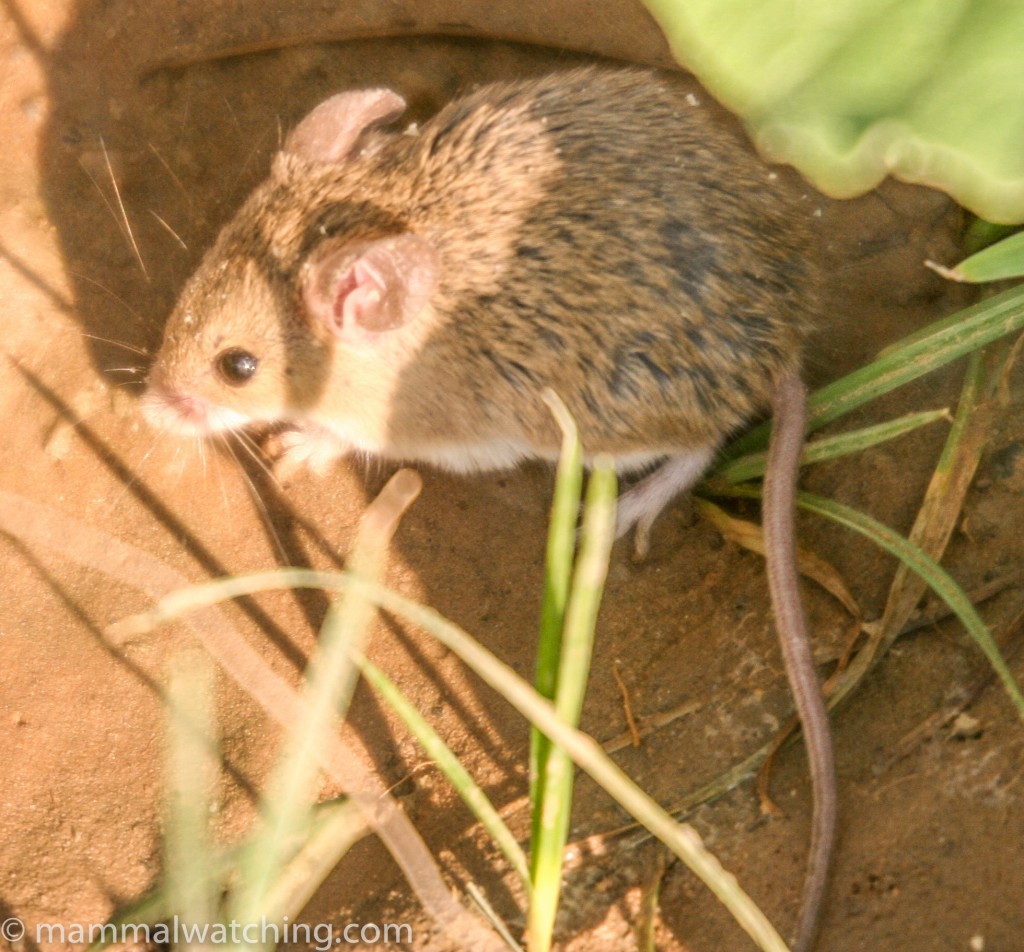
Indian Field Mouse, Mus booduga
An Indian Field Mouse (Mus booduga), an Indian Bush Rat(Golunda ellioti), with its diagnostic ears that are hairy on both sides, and an Indian Gerbil.
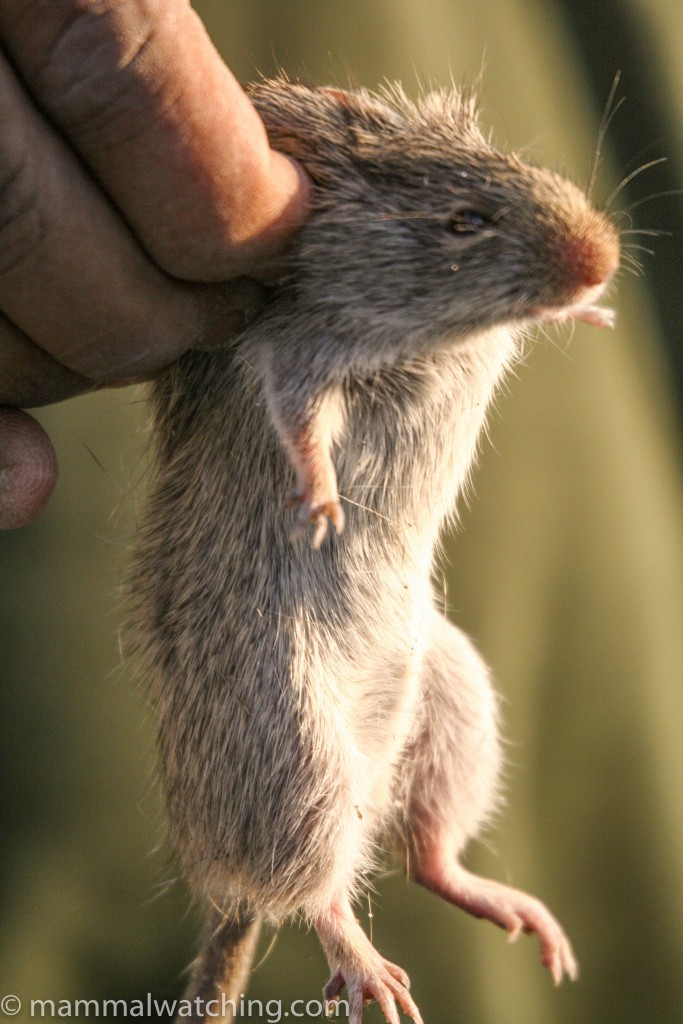
Indian Bush Rat, Golunda ellioti
Before brekky, Jugal took me around the village to look for Indian Desert Jirds (also known as Desert Gerbils). He spotted one within a few minutes and we saw several in the colony emerging partially from – but never fully leaving – their burrow holes.
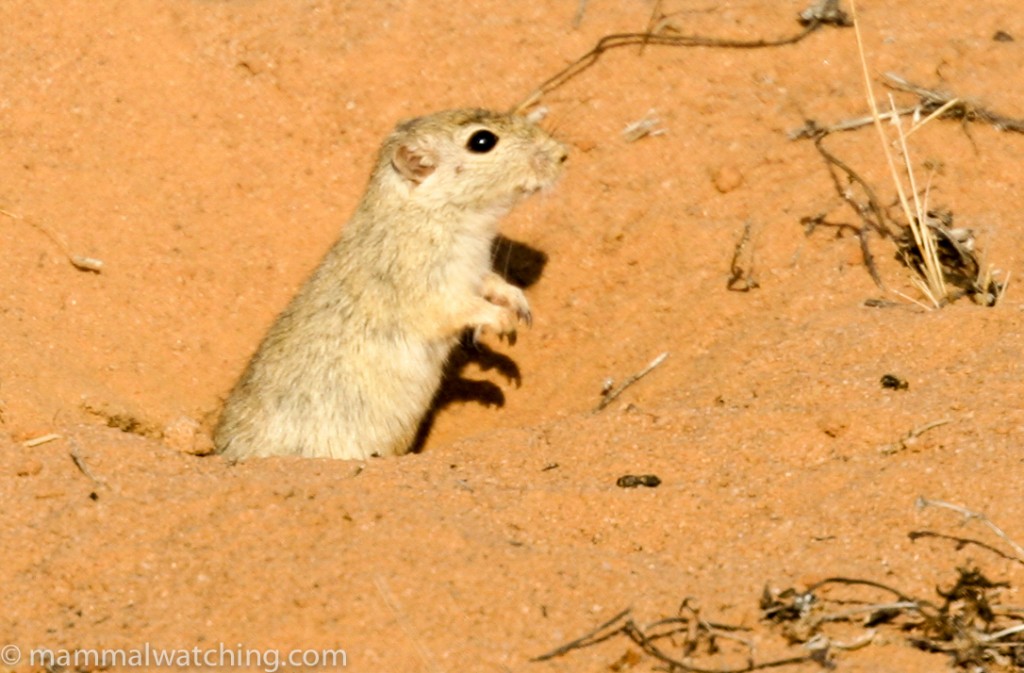
Indian Desert Jird, Meriones hurrianae
A Grey Mongoose – perhaps hunting jirds – walked right up to the vehicle in response to Jugal’s squeaking.
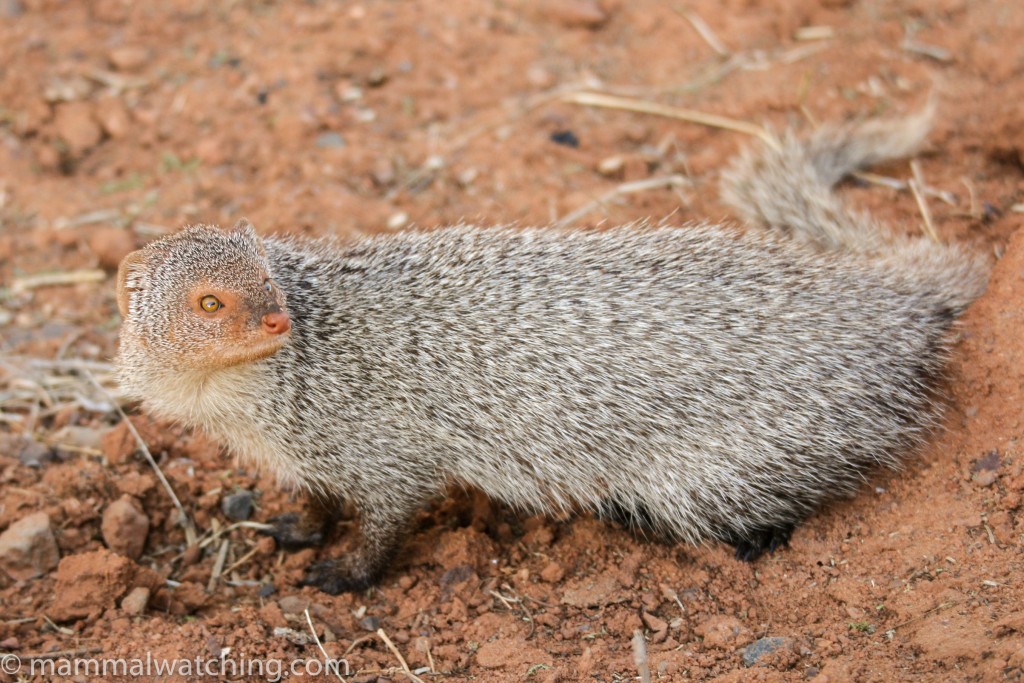
Indian Grey Mongoose, Herpestes edwardsii
Jugal and I said goodbye just outside town at a camp of 50 or so Indian Flying Foxes, near the Forestry Office HQ.
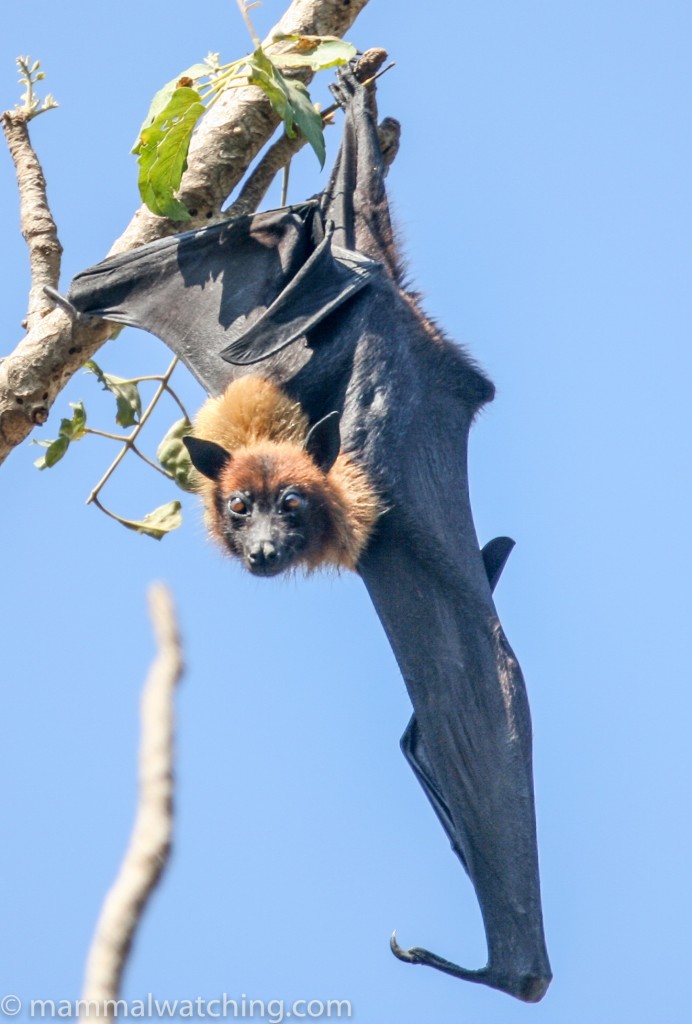
Indian Flying Fox, Pteropus medius
Dasada Camp
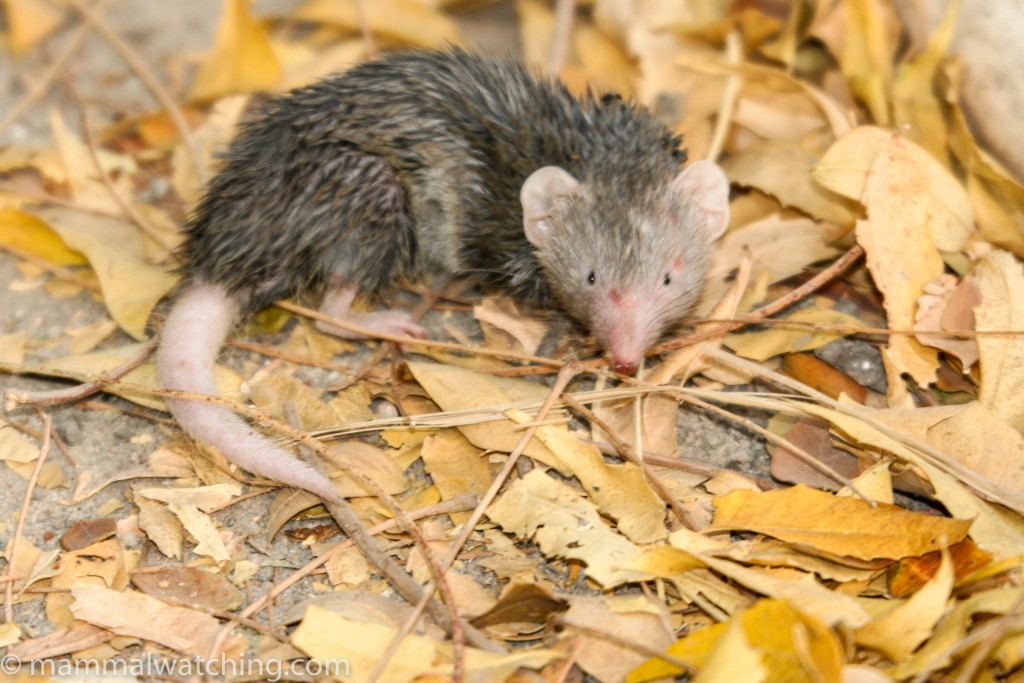
Asian House Shrew, Suncus murinus
Lured by the promise of a “guaranteed” Striped Hyena I returned to Dasada Camp. I had phoned to let them know that I wanted to travel to Murdoch Island and was told that would be OK. But when I arrived at about 5 p.m. the jeeps were out on the regular afternoon safaris. They didn’t return for two hours (sunset) at which point I was told that I couldn’t visit Murdoch Island: it was 60 kms into the Rann and there was no road, so it would be too hard to find in the dark. This was very disappointing.
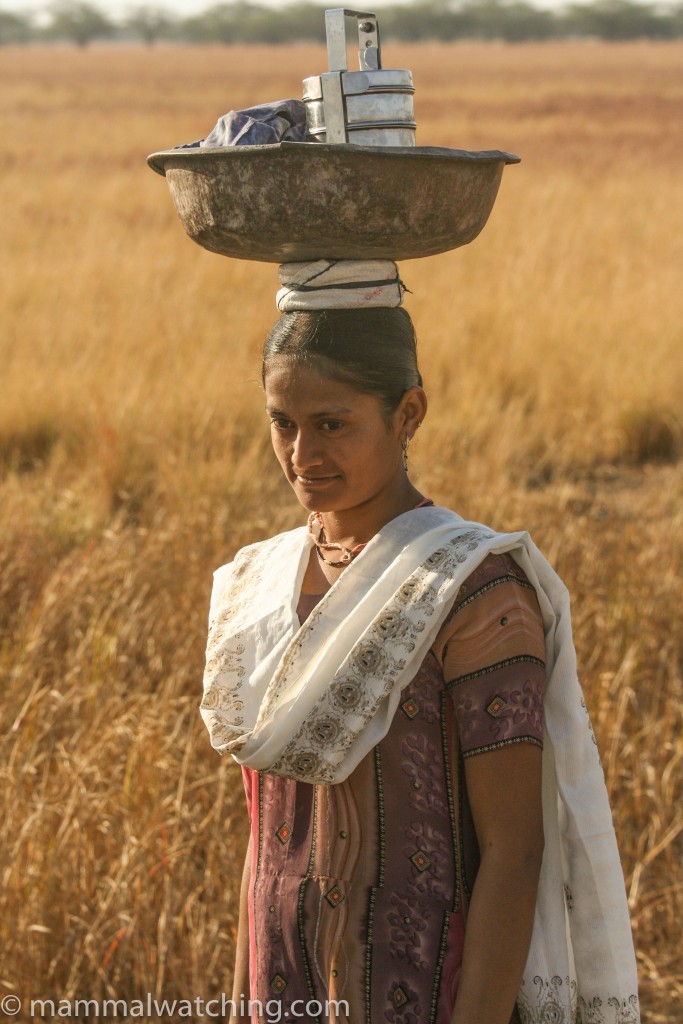
After dinner we went out in search of porcupines in some agricultural land around Dasada. I was shown several active holes – within the cactus hedgerows – and was told that the porcupines came out only late in the evening to eat the crops. At about 11 p.m. we heard what was almost certainly a porcupine rustling through the hedge to its hole, but I didn’t get a glimpse. We spent half an hour waiting at a farmer’s place, after the farmer had come to investigate our spotlighting with his shotgun, before returning to camp in the small hours of the morning. We saw a Jungle Cat on the way back but nothing else memorable.
Gir National Park
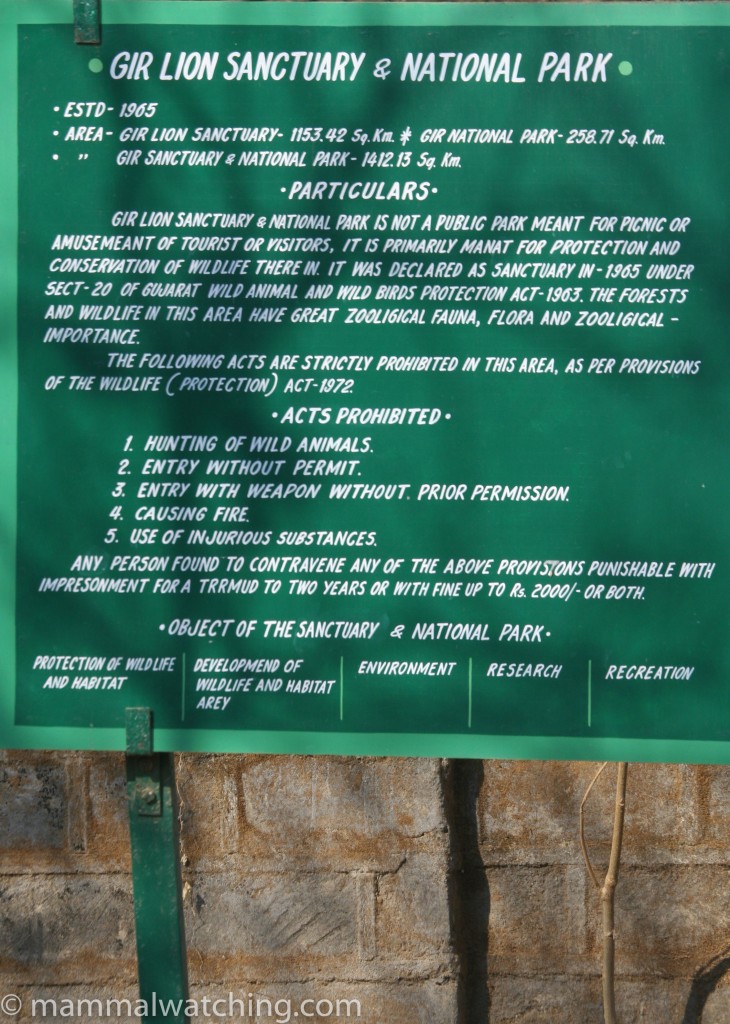
Welcome to Gir NP
I’d planned to stay for two nights in Gir National Park, the last home of the Asiatic Lion(a subspecies of the African variety). Lions aside, Gir was about the only place in Gujurat I was aware of where I had a shot at seeing Chousingha (Four-horned antelope) an animal I had missed in Madha Pradesh in 1997.
According to Vivek Menon’s A field guide to Indian Animals Gir is the best place in India to see Striped Hyenas. I don’t know how he came to that conclusion: the park is strictly controlled for spotlighting (including the public road that runs through the middle) and none of the people I spoke to saw hyenas often.
It’s a seven hour drive from Dasada to Gir. I arrived at 3.30 p.m. At 3.45 p.m.I was in a jeep heading off for an afternoon safari.
Because I had the vehicle to myself I was able to focus on looking for Chousingha. And after an hour or so we found one, spotted by the driver in an area of woodland where he had seen them before. I’d been told by both North West Safaris and the people at the Gir Birding Lodge (my hotel) that I’d need to be lucky to see this species (North West reckoned they see Chowsinghas once in every six or seven visits). But I suspect that few people focus their attention on seeing this animal and I reckon my chances were considerably better than what I had been told.
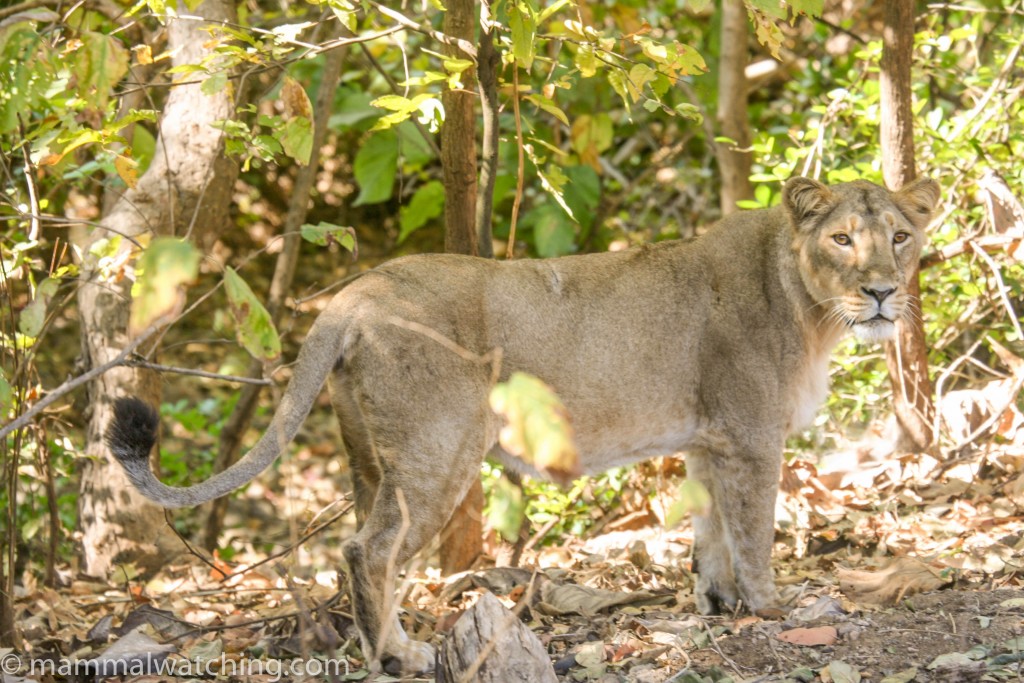
Asiatic Lion, Panthera leo persica
The park is a mixture of quite open decidous forest with many teak trees and some grassland. There is lusher forest along the rivers. It was extremely dry with a heap of fuel on the ground but little sign of bush fires.
After we’d found the Chowsingha our attention turned to the cats. There are several hundred Lions in the park and I saw them on both of my evening and morning game drives. It is also a great spot for Leopards. Steve Anyon-Smith, who had visited a few days before me, saw Leopards during four of his five drives in the park. But this is exceptional: I saw a Leopard crossing the road the next morning and my guide insisted I was lucky.
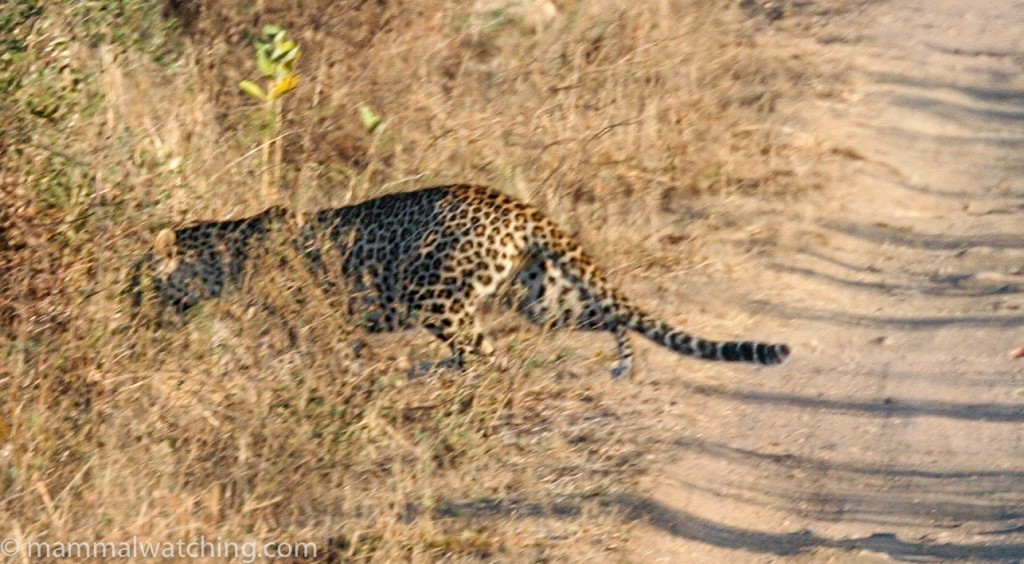
Indian Leopard, Panthera pardus fusca
Other mammals in the park include abundant Chital, Nilgai, Sambar, gray langurs, and a couple of Jackals.
In the evening I went spotlighting. Although a public road runs through the closed park, the Forestry Department wouldn’t let me use a spotlight along it and, after some interrogation from forestry guards, my driver became nervous about me using a spotlight anywhere.
Someone from the Birding Lodge eventually offered to accompany us, and led me along a network of back roads. The habitat looked quite promising and we saw Chinkara (rarely seen in Gir apparently), Nilgai, Jackals and Indian Hares.
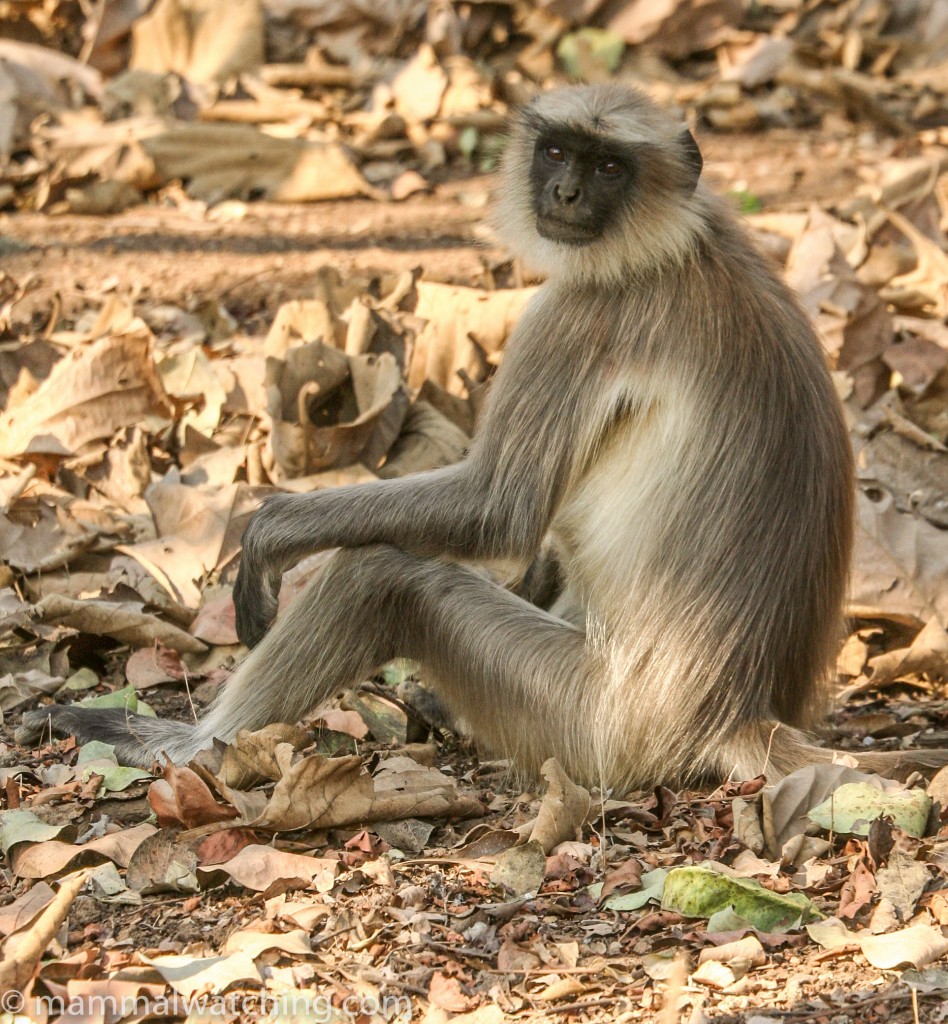
Black-footed (Southern Plains) Grey Langur, Semnopithecus (dussumieri) hypoleucos
I set some Elliott traps in the lodge’s gardens but didn’t catch anything.
Velavadar N.P
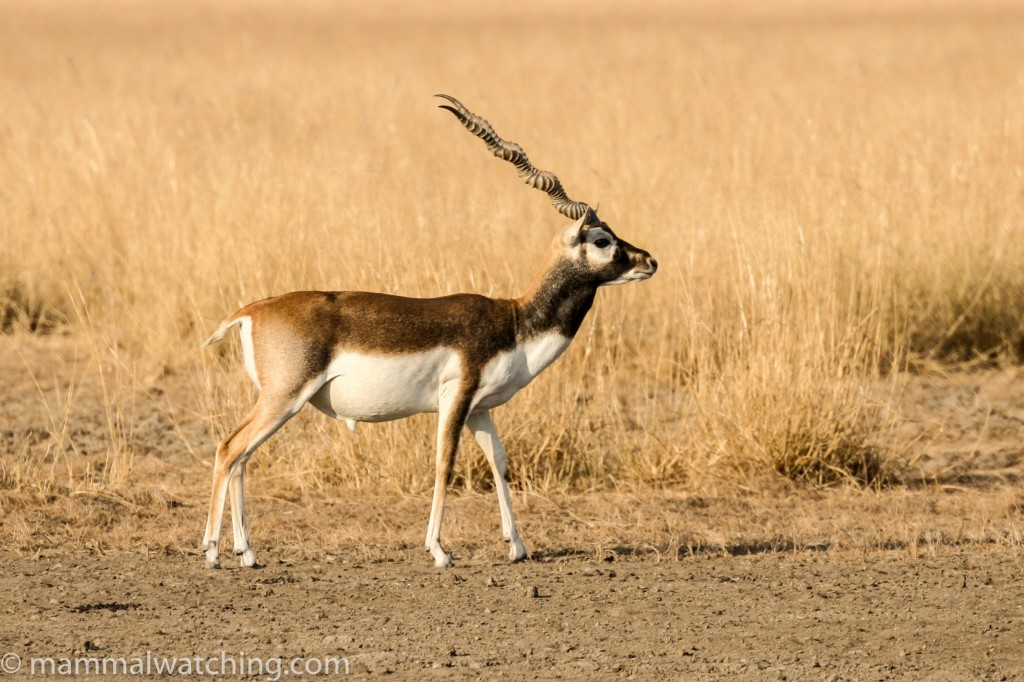
Blackbuck, Antilope cervicapra
I hadn’t planned to visit Velavadar National Park. But as I travelled around Gujurat, several people told me they saw hyenas there quite often. It is also an excellent spot for Wolves, and was set up to protect a large population of Blackbuck.
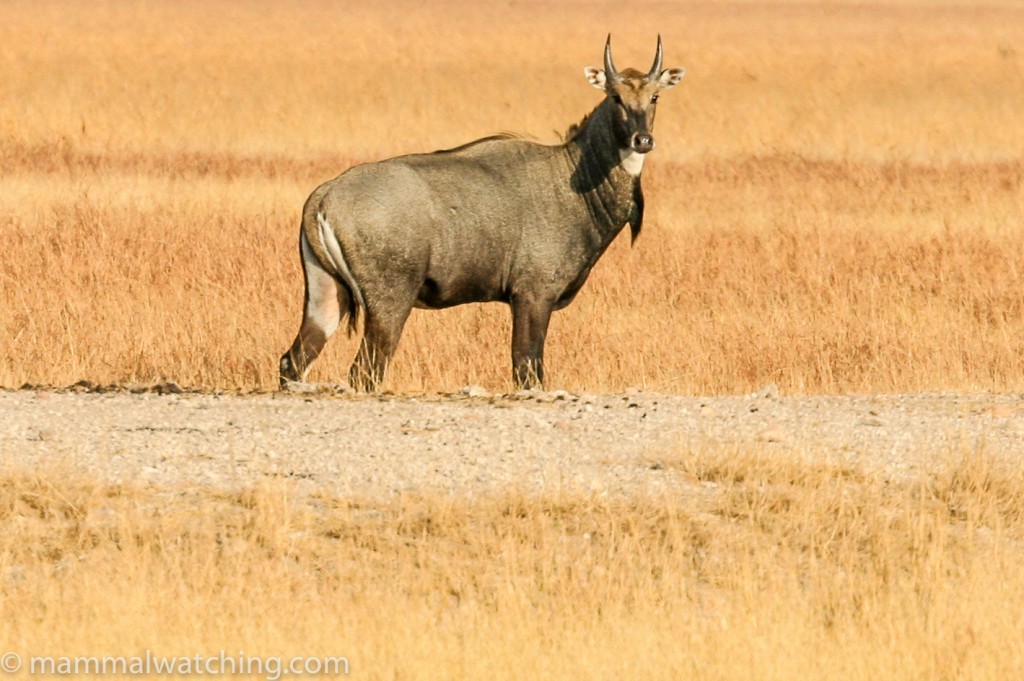
Nilgai, Boselaphus tragocamelus
Velavadar is a four hour drive from Gir. The entry charges to the park are extortionate for foreigners, but they are enforced randomly (including expensive permits to take cameras into the park which I was not aware of during my first visit, but were charged the next day when the guy on the gate saw my camera). My driver filled in the entry certificate in his name and I was later told that that had saved me a lot of money in entry fees.
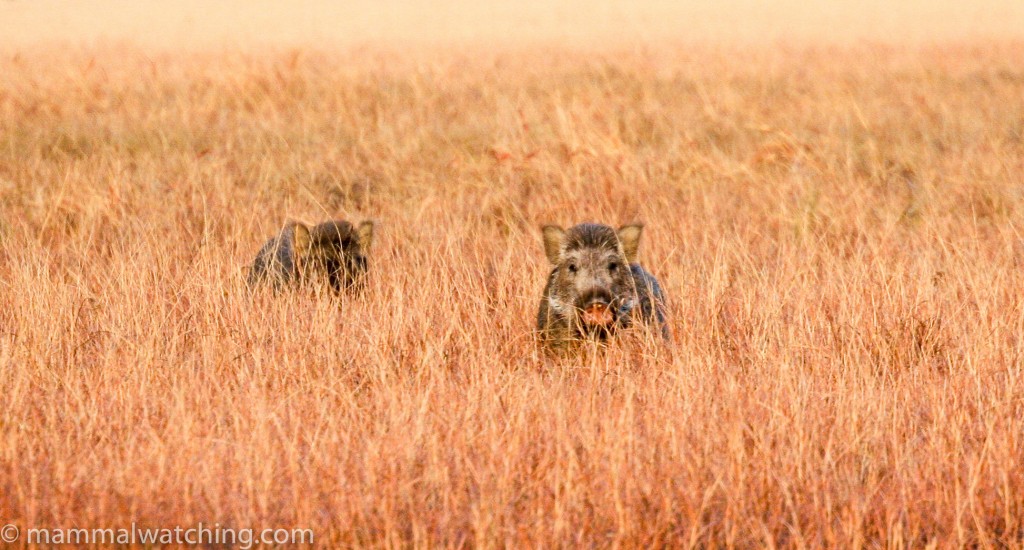
Wild Boar, Sus scrofa
A guide is compulsory. He spoke very little English but he understood enough to focus on hyena finding.
We checked out a number of culverts under the road – all occasional den sites – and he found an active burrow about 200 metres off the road in the middle of the park, which he found after seeing a hyena at about 5 p.m. while I was on one of the lookout towers.
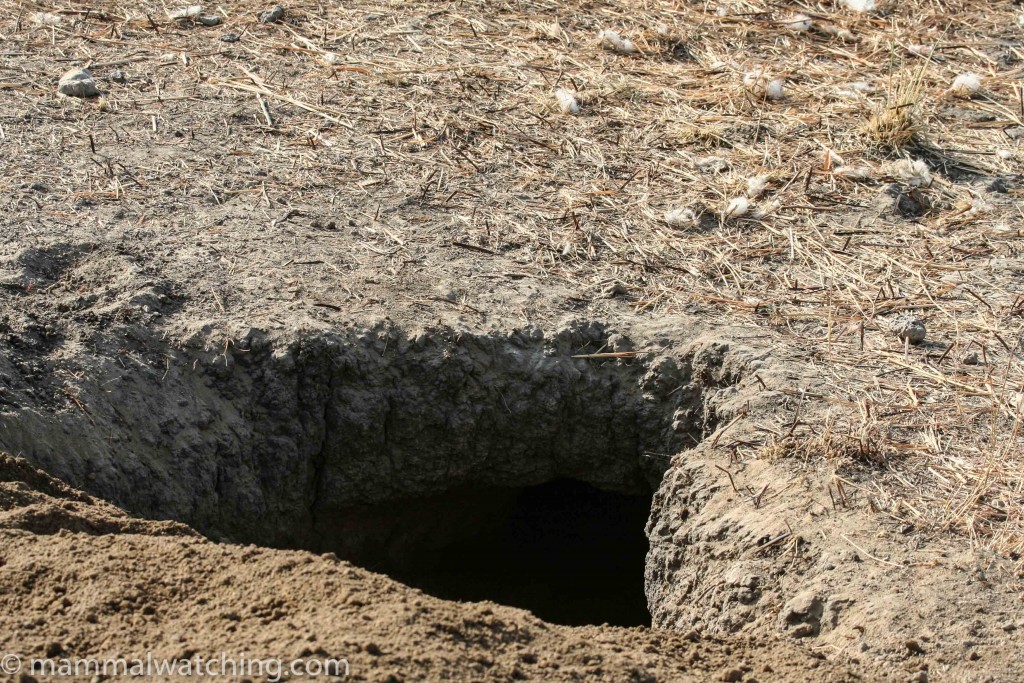
Hyena Den
We stayed in the park until sunset. No hyenas or Wolves, although we did see a Jungle Cat, along with abundant Blackbuck and Nilgai.
I was back at first light the next morning. Five Wolves were in the grassland near the entrance gate, together with some Wild Boar.
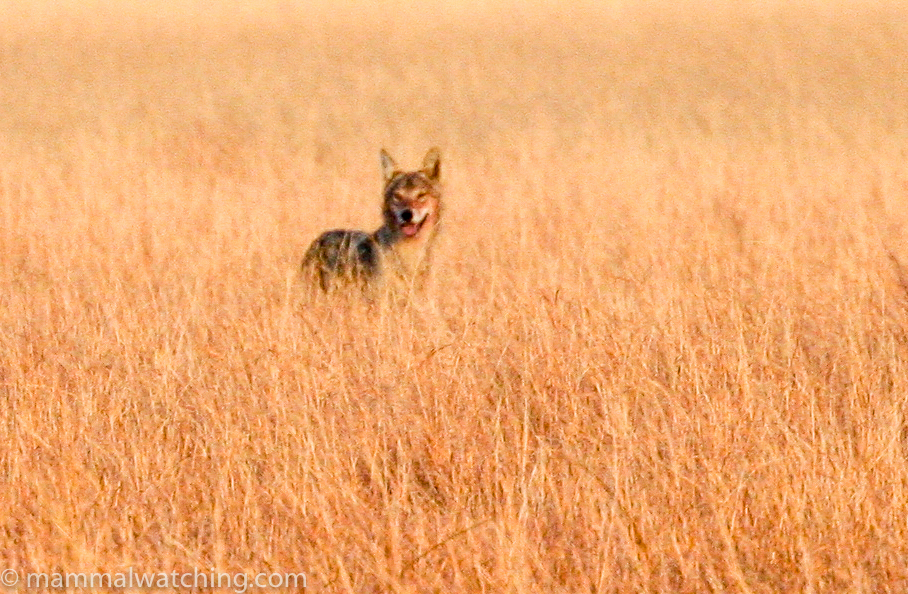
Wolf, Canis lupus pallipes
After half an hour scanning the park from one of the lookout towers I walked up to the hyena den. A pair of animals were partially obscured in a thicket near the den. Just as I got close enough to decide they were Wild Boar, there was a noise from the den and I looked over to see a Striped Hyena take off into the bush just 20 metres from me.
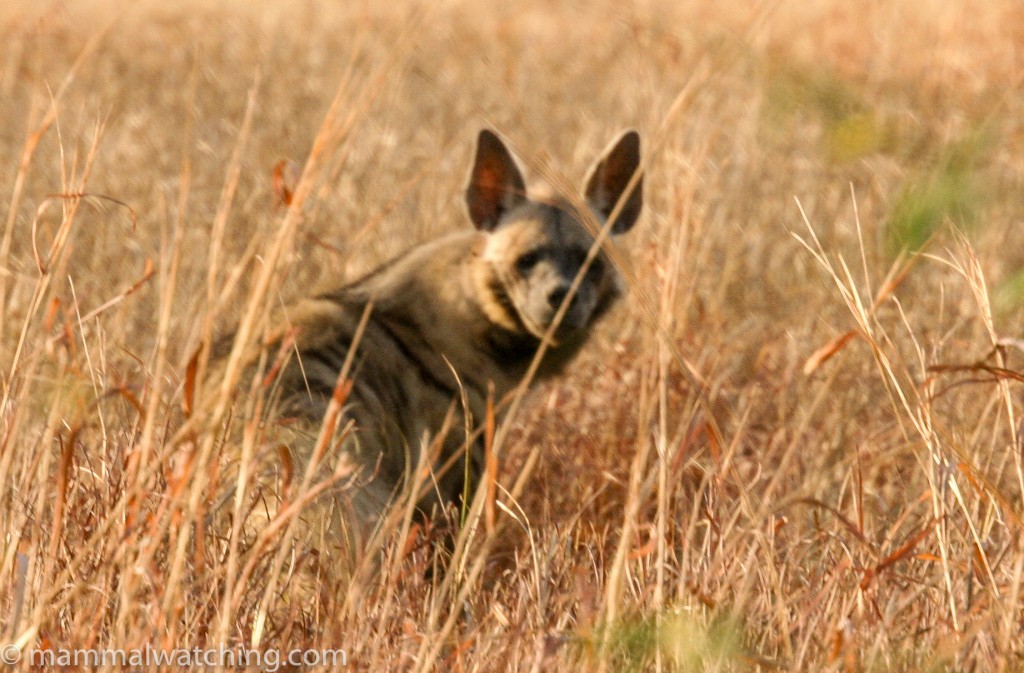
Striped Hyena, Hyaena hyaena
I checked some of the park buildings for bats without success, and then visited the village behind the Velavadar lodge, where I had wanted to stay but it was full. Grey Mongooses were common in the village (I saw two in 15 minutes) as were Five-striped Palm Squirrels.
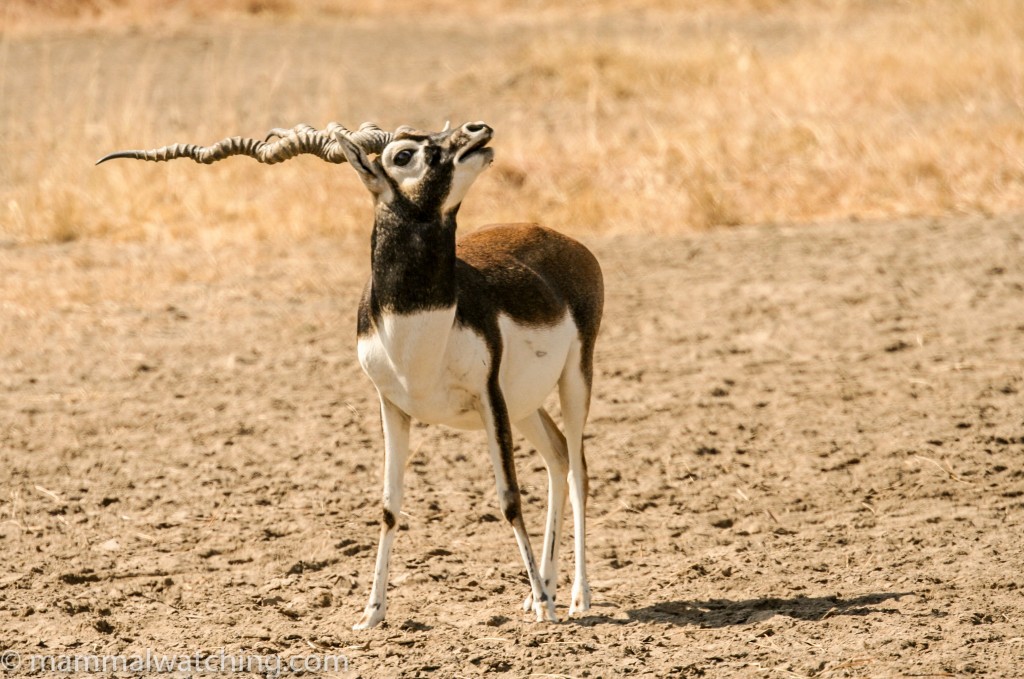
Blackbuck, Antilope cervicapra
Ahmedabad
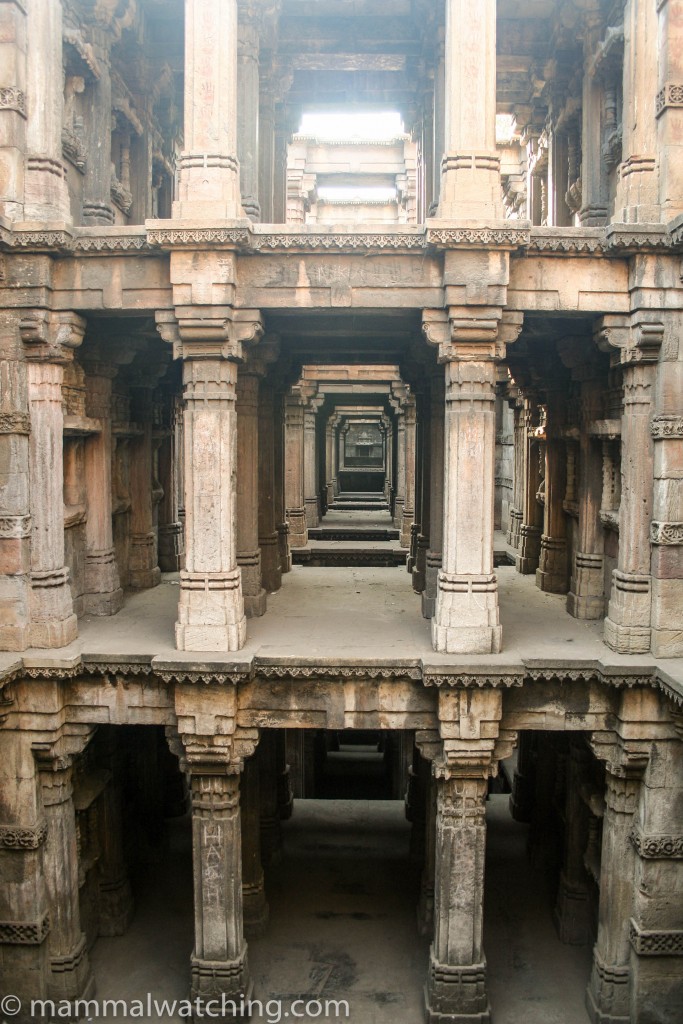
Step Well, Ahmedabad
Back in Ahmedabad I visited the well preserved ruins of a “step well” in town. There were a hundred or so Egyptian Tomb Bats (Taphazous perforatus) roosting inside.
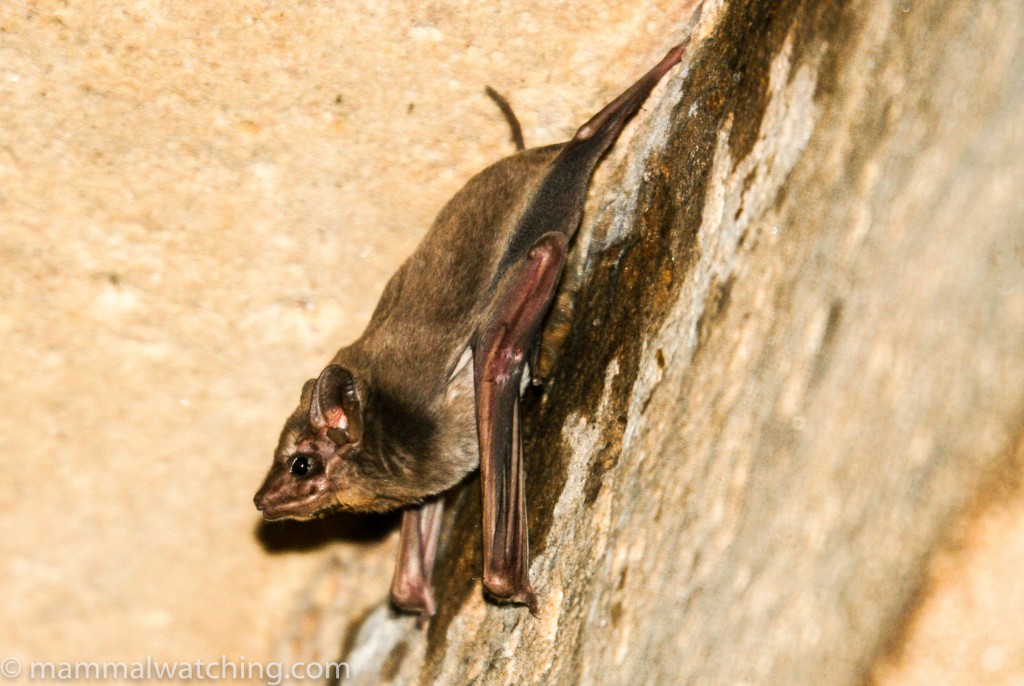
Egyptian Tomb Bat , Taphozous perforatus
All up I saw 36 species of mammals, 15 of them lifers.
Trip List
1. Rhesus Macaque
2. Black-footed (Southern Plains) Grey Langur
3. Sambar
4. Chital
5. Nilgai
6. Blackbuck
7. Chowsingha
8. Chinkara
9. Wild Boar
10.Asiatic Wild Ass
11.Asian Jackal
12.Striped Hyena
13.Wolf
14.Indian Fox
15.Lion
16.Leopard
17.Jungle Cat
18.Wild Cat
19.Common Palm Civet
20.Grey Mongoose
21.Indian Hare
22.Asian House Shrew
23.Indian Hedgehog
24.Five striped Palm Squirrel
25.Lesser Bandicoot Rat
26.Indian Gerbil
27.Indian Desert Jird
28.Sand-Coloured Rat
29.Indian Bush Rat
30.House Mouse
31.Little Indian Field Mouse
32.Indian Flying Fox
33.Greater Mouse-tailed Bat
34.Egyptian Tomb Bat
35.Asiatic Greater Yellow House Bat
36.Gangetic River Dolphin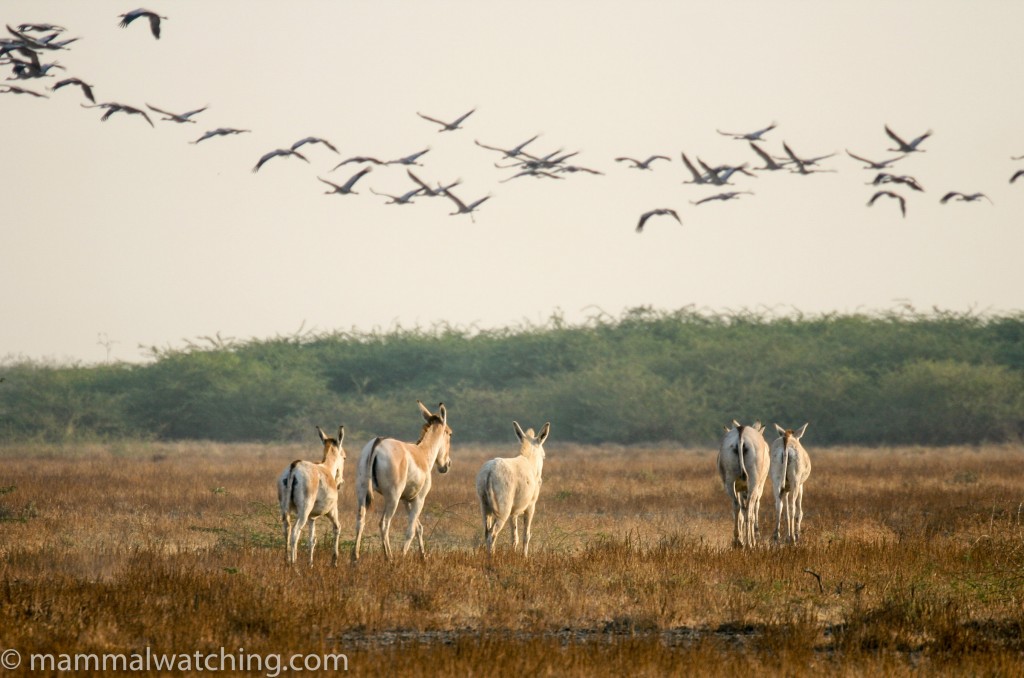
Asiatic Wild Ass, Equus hemionus


Leave a Reply
You must be logged in to post a comment.